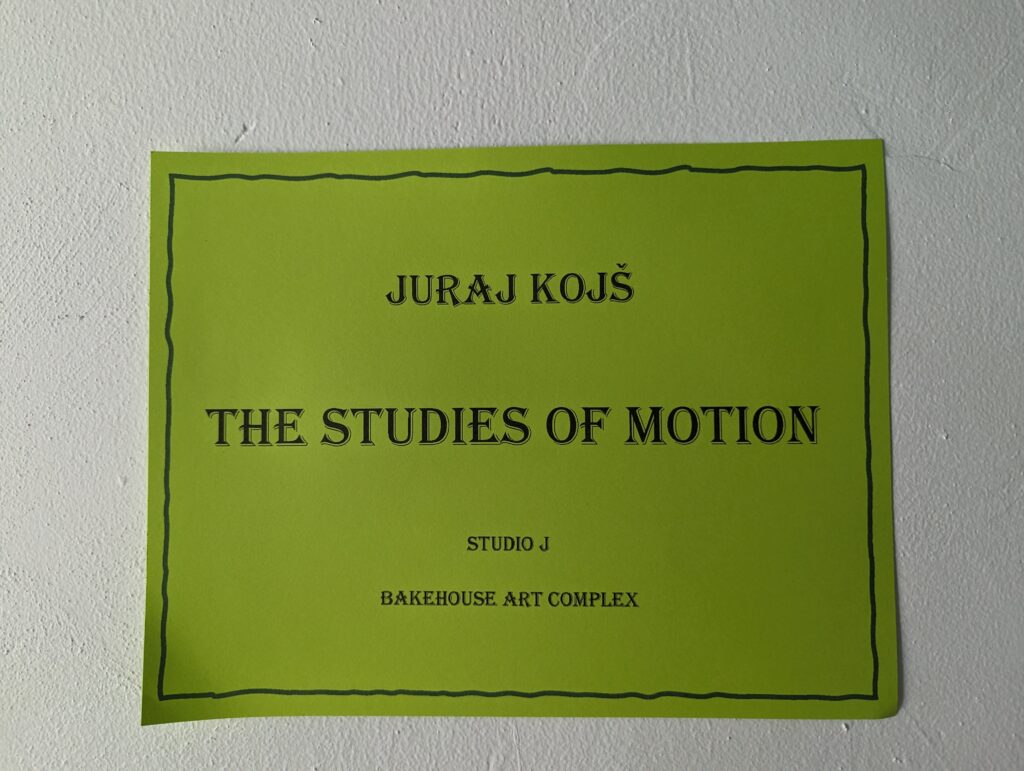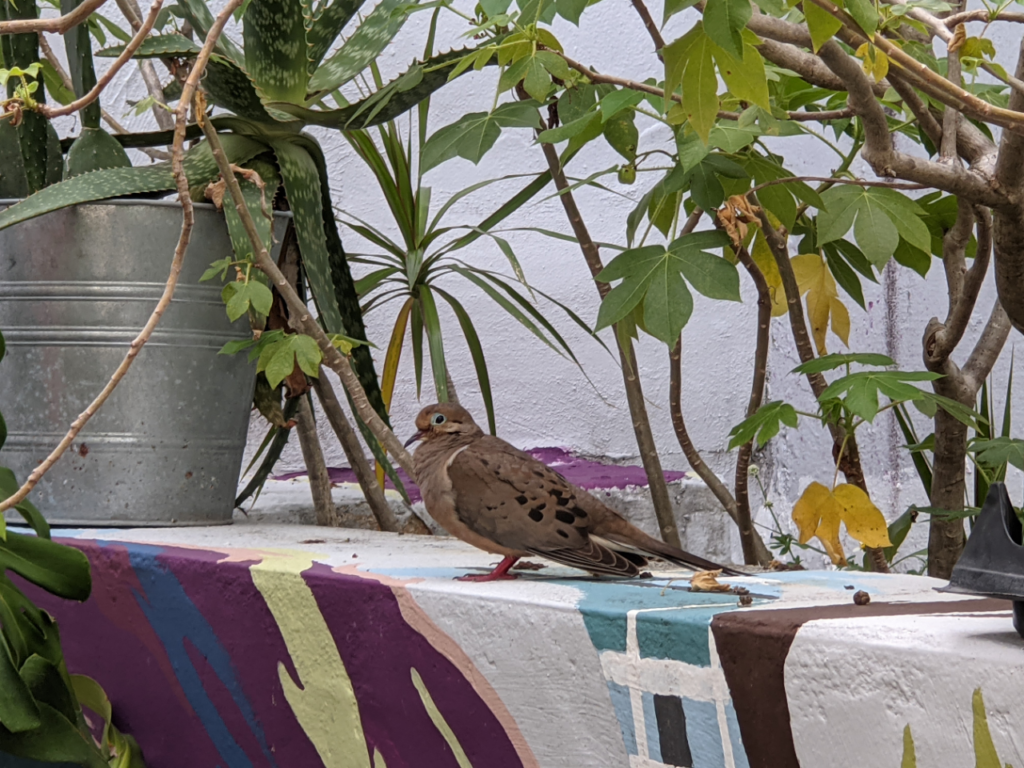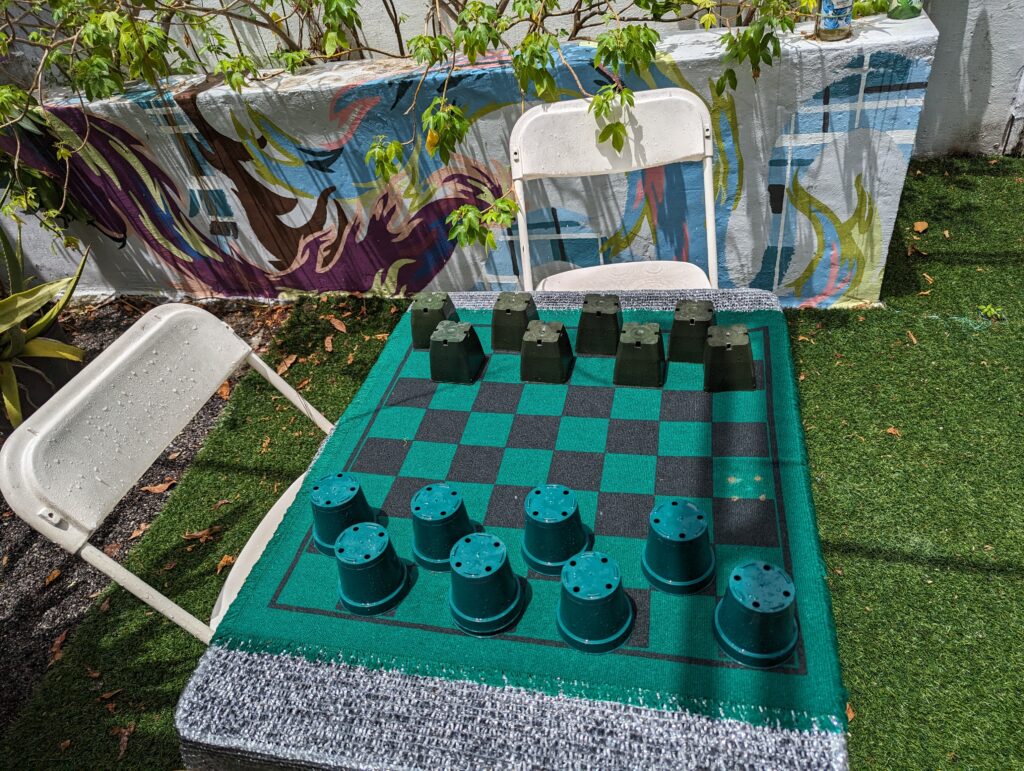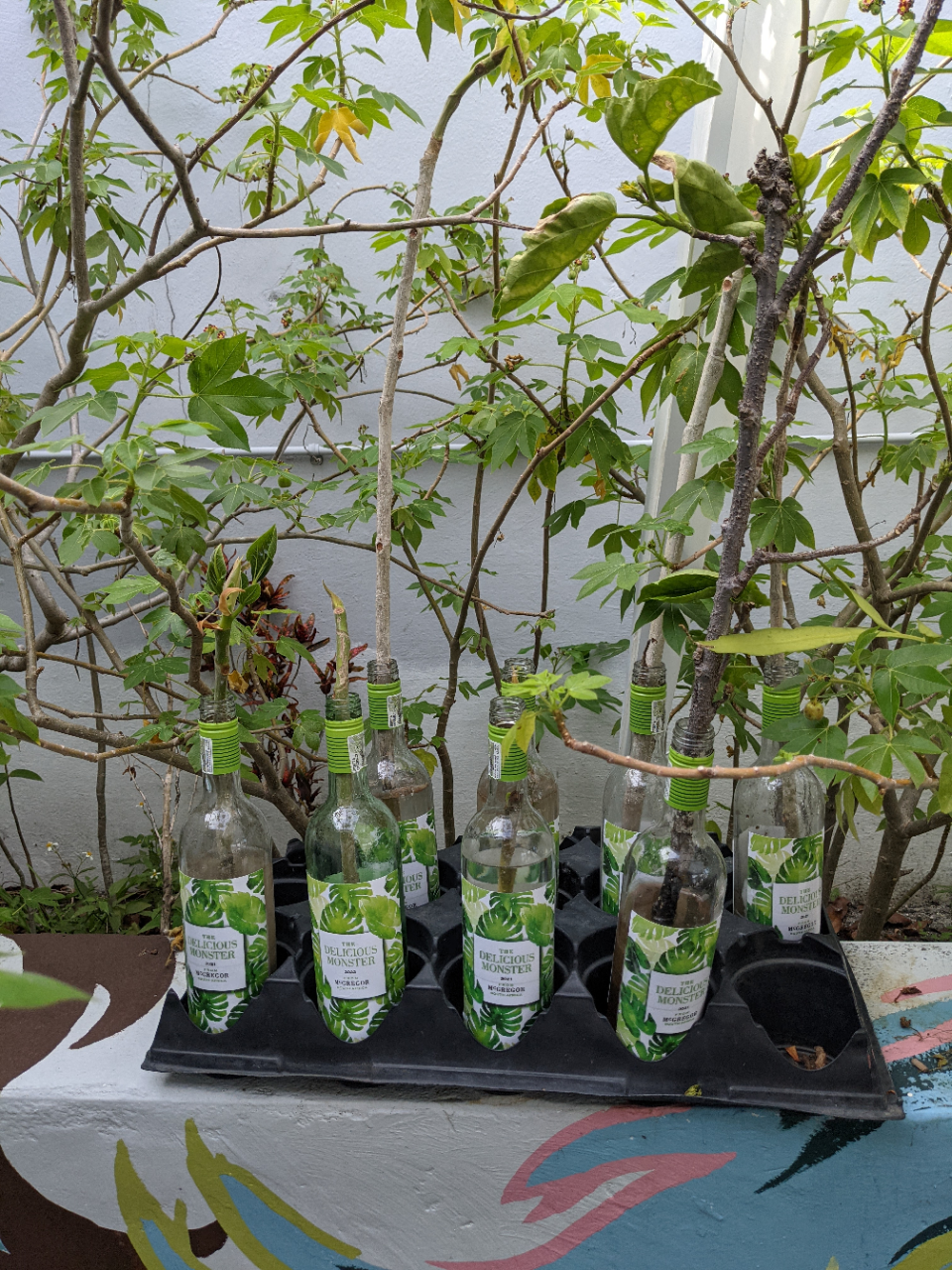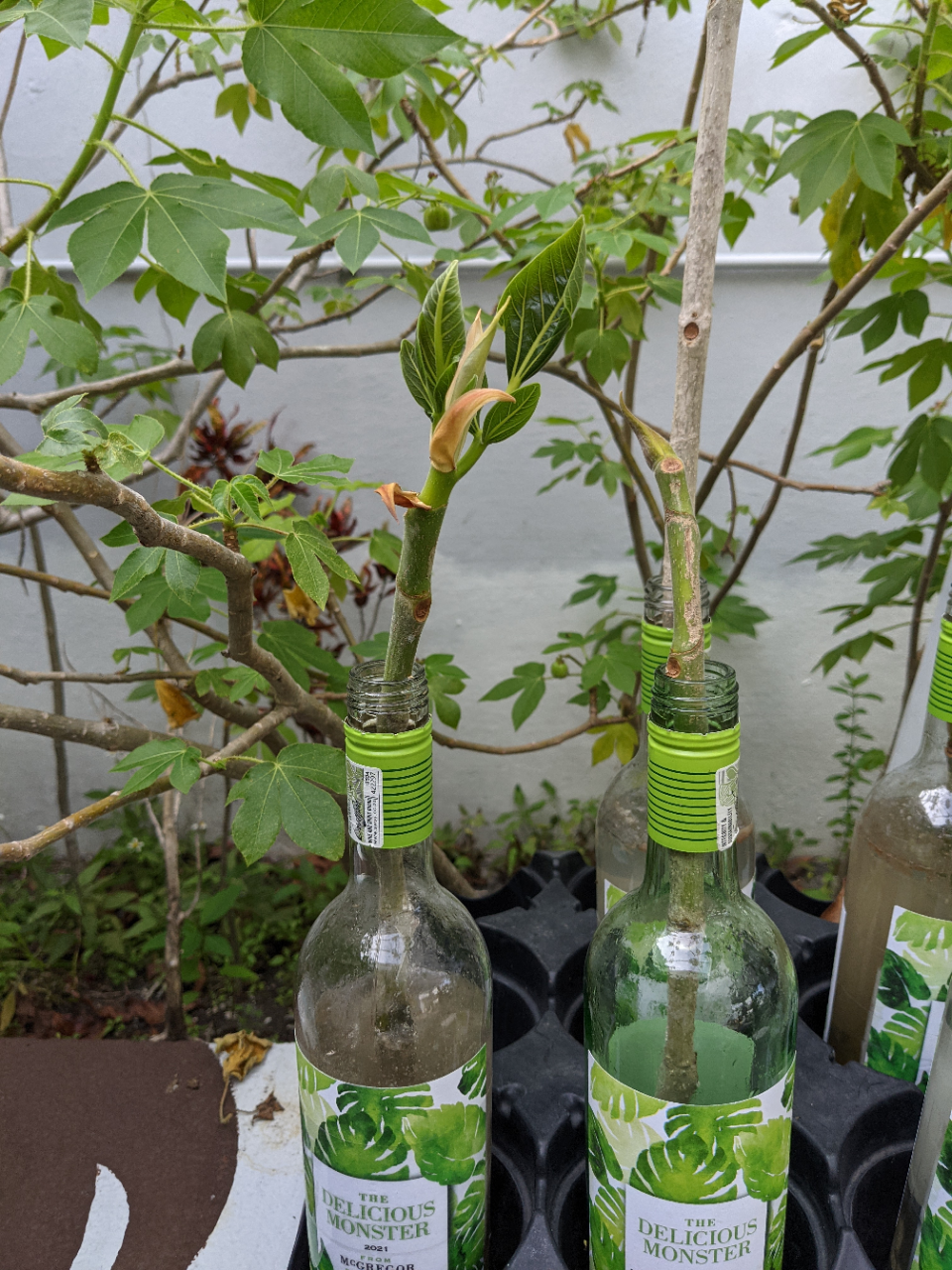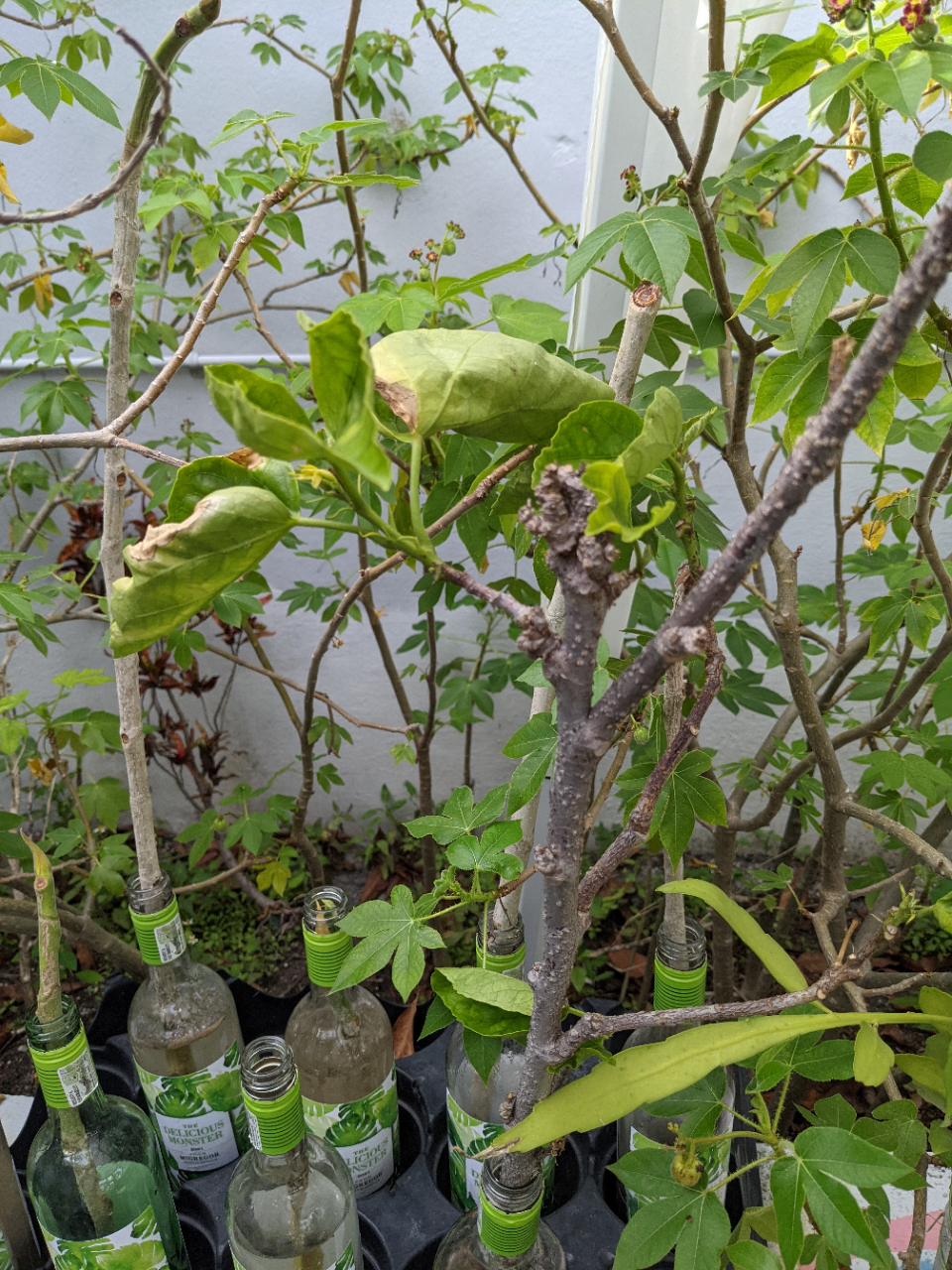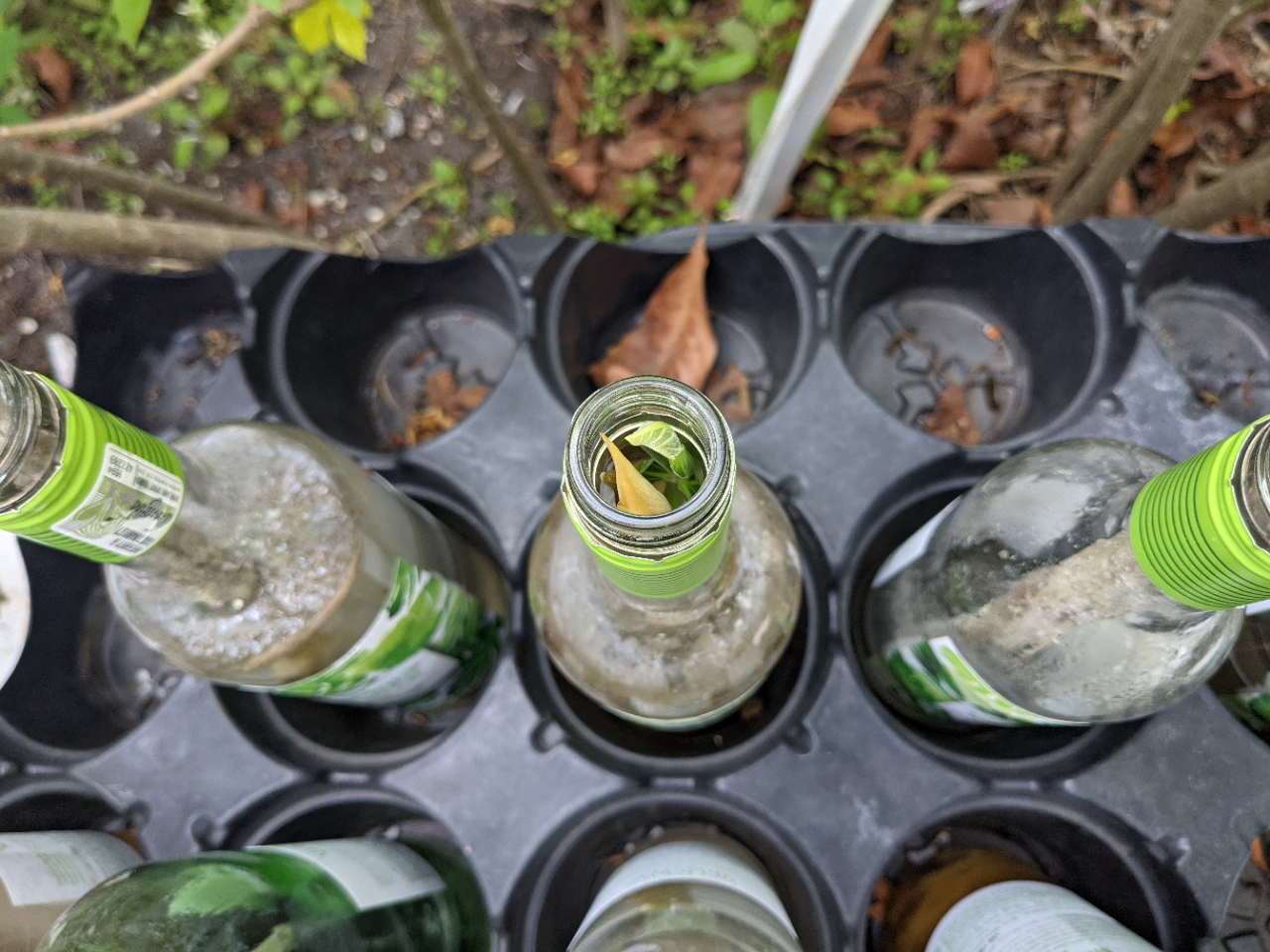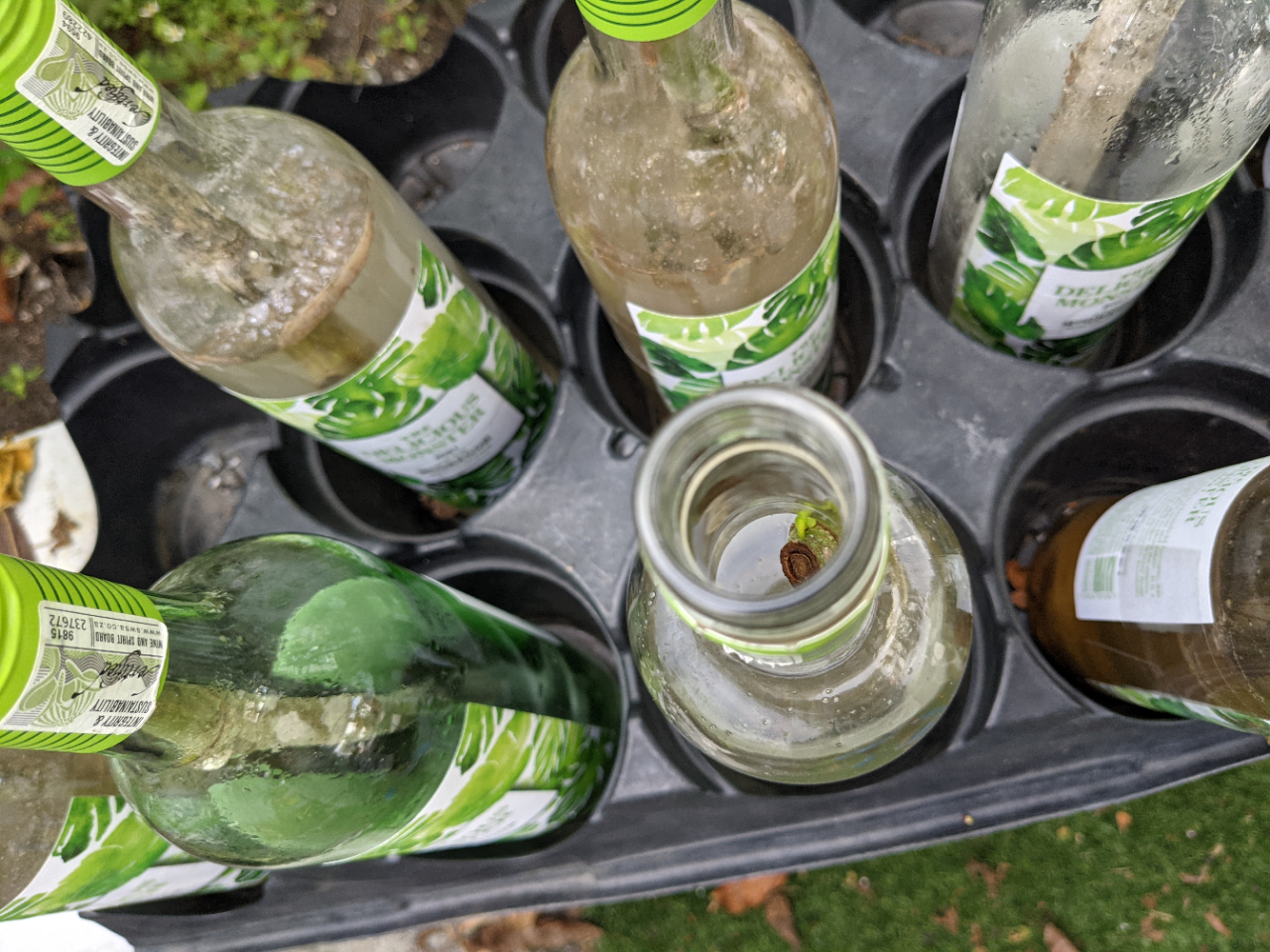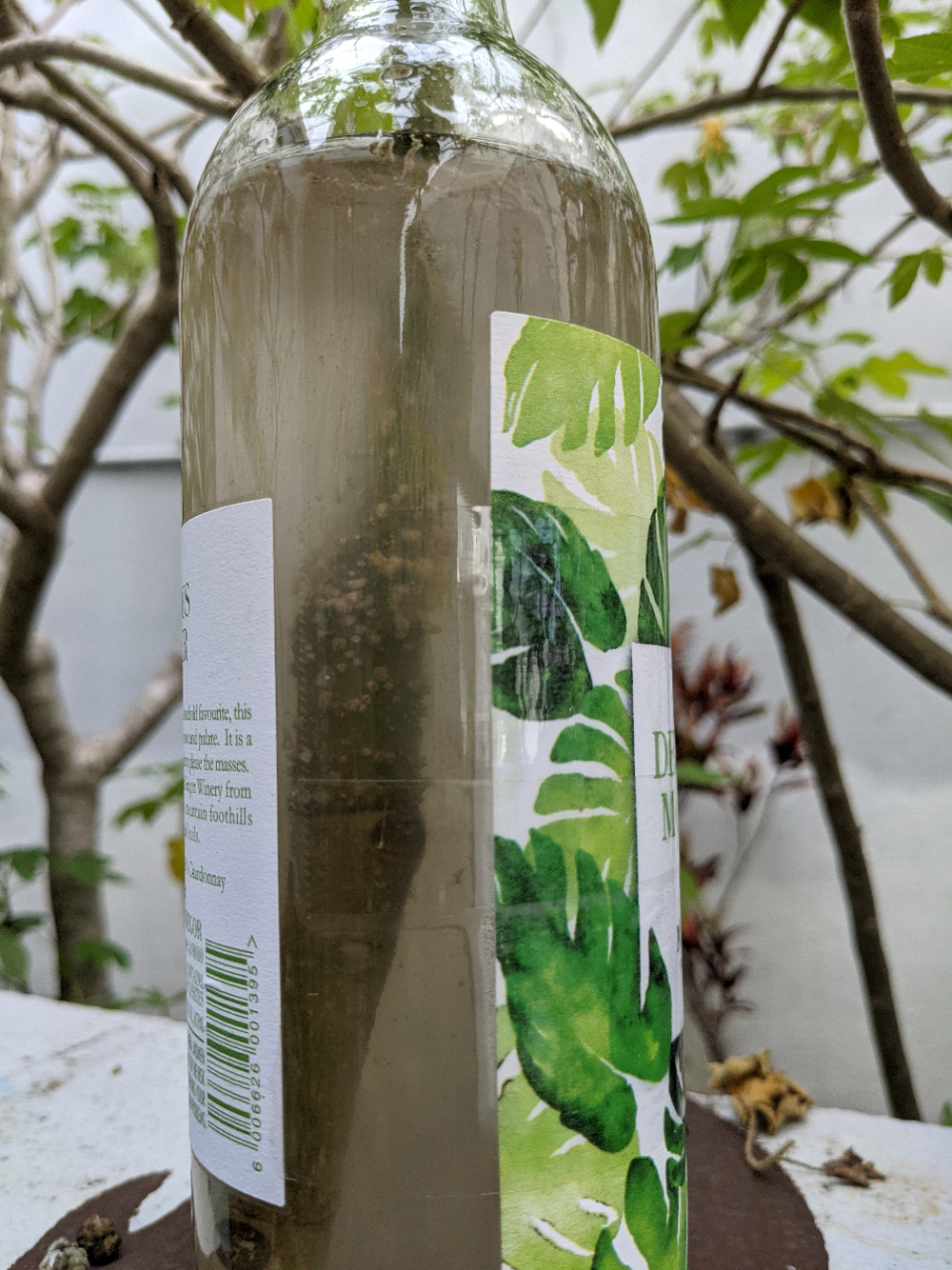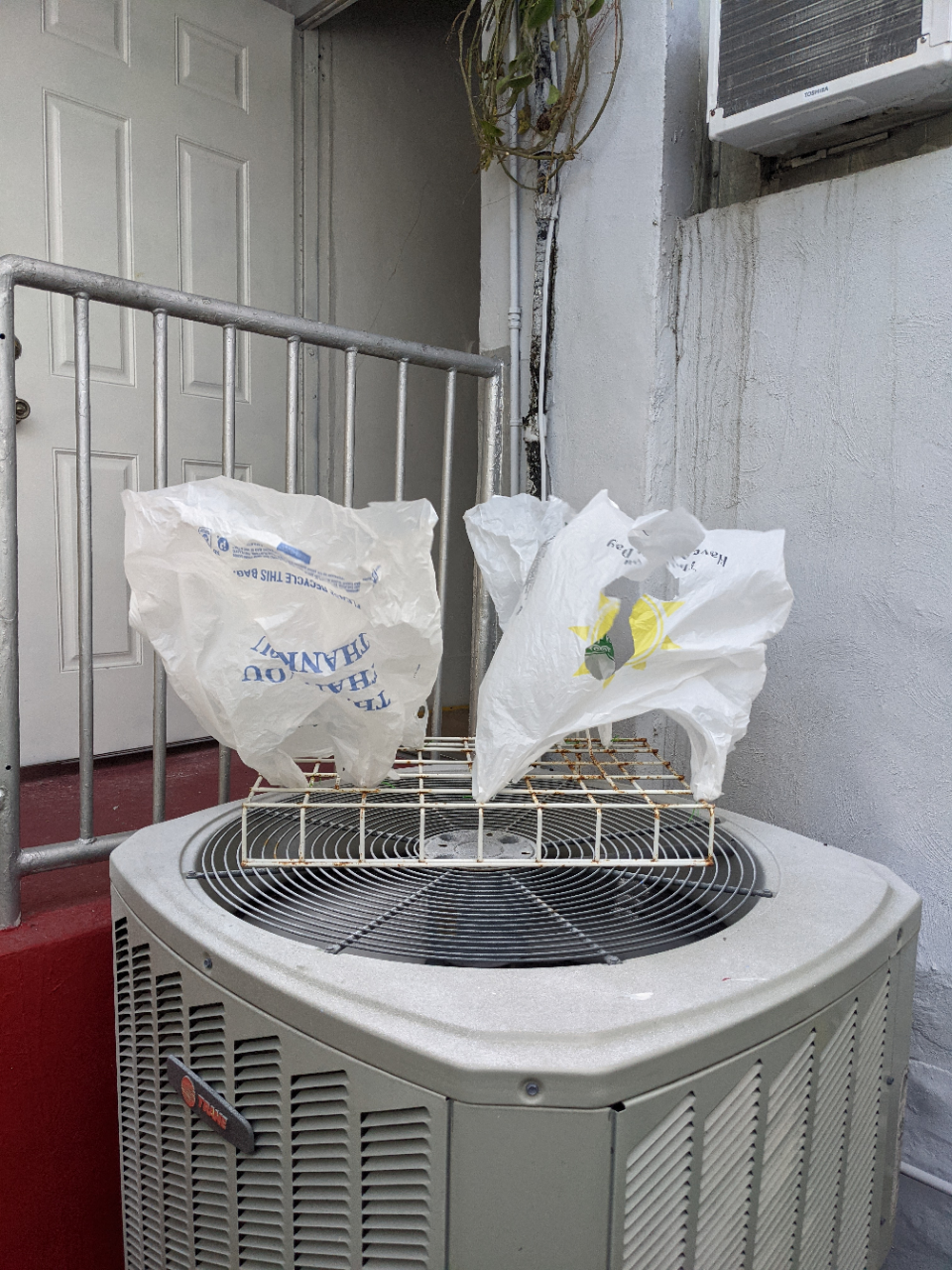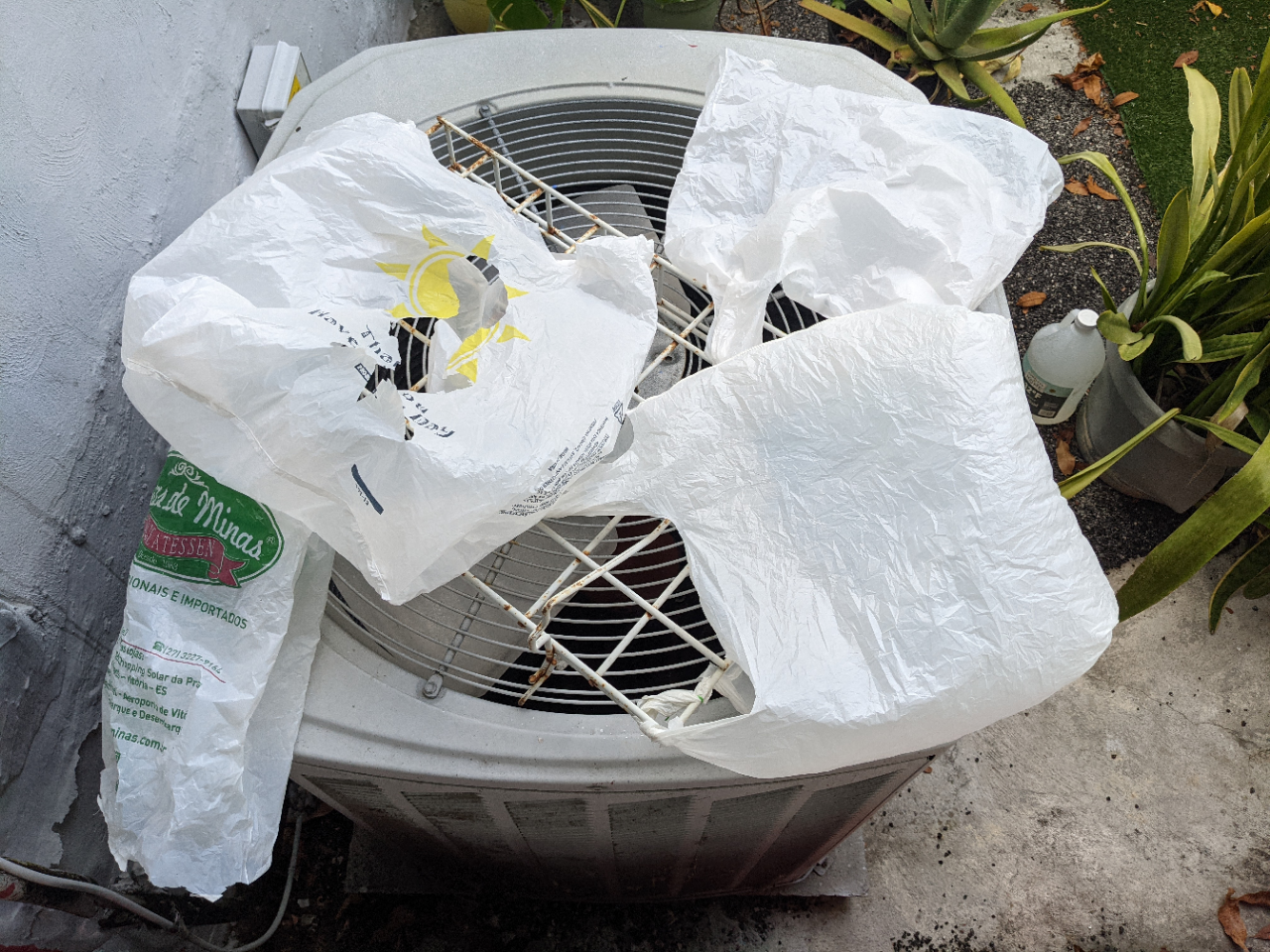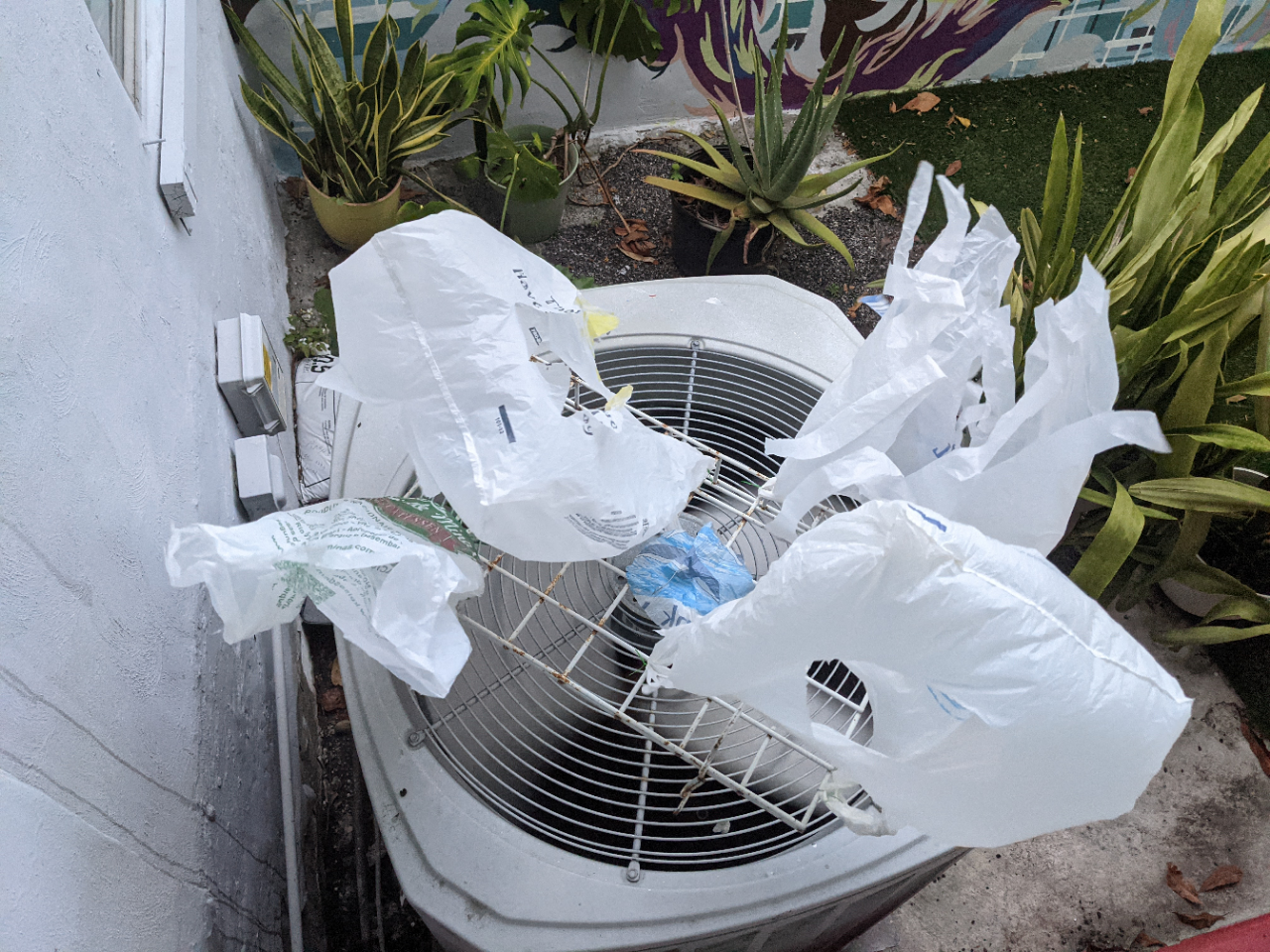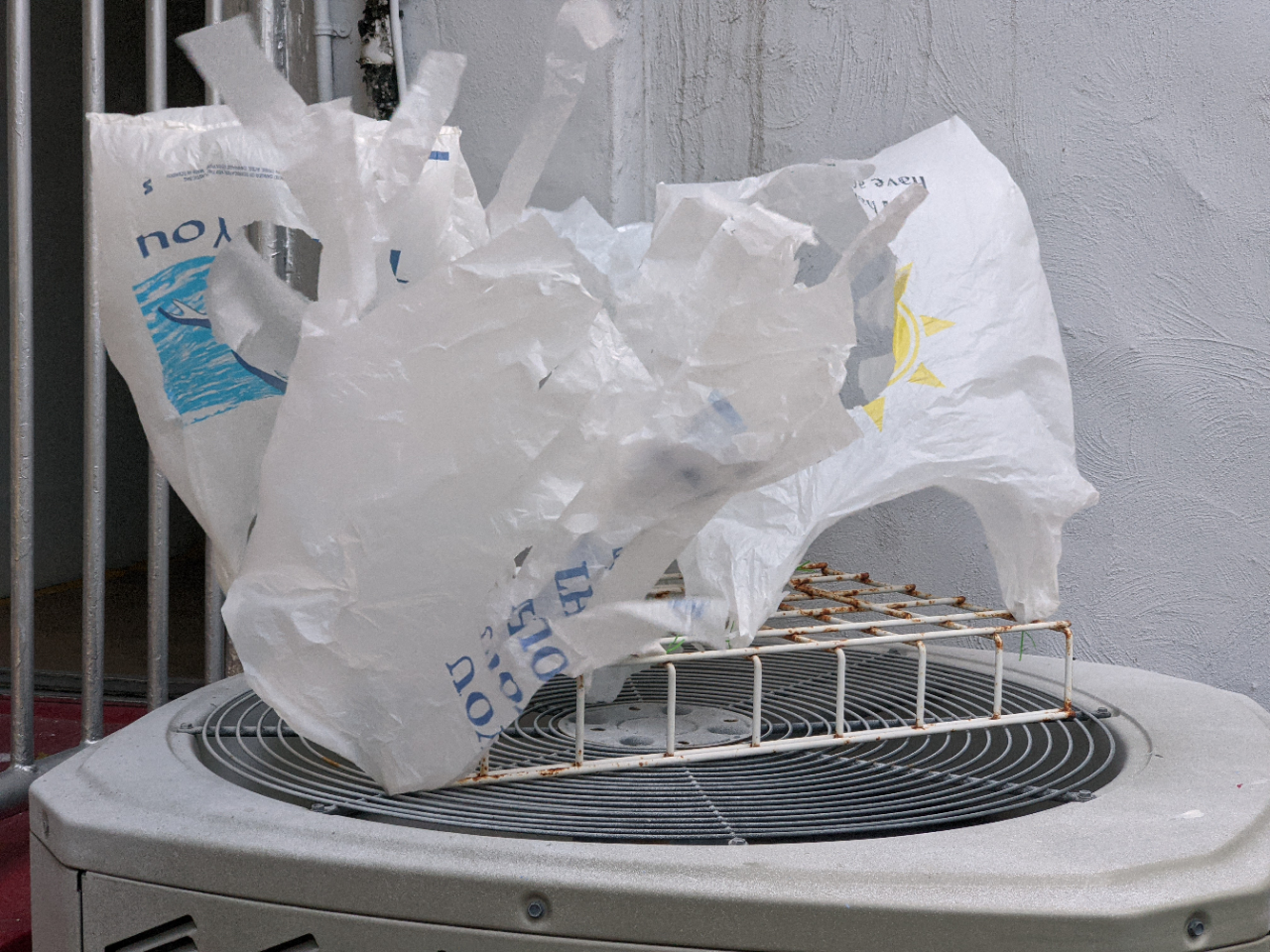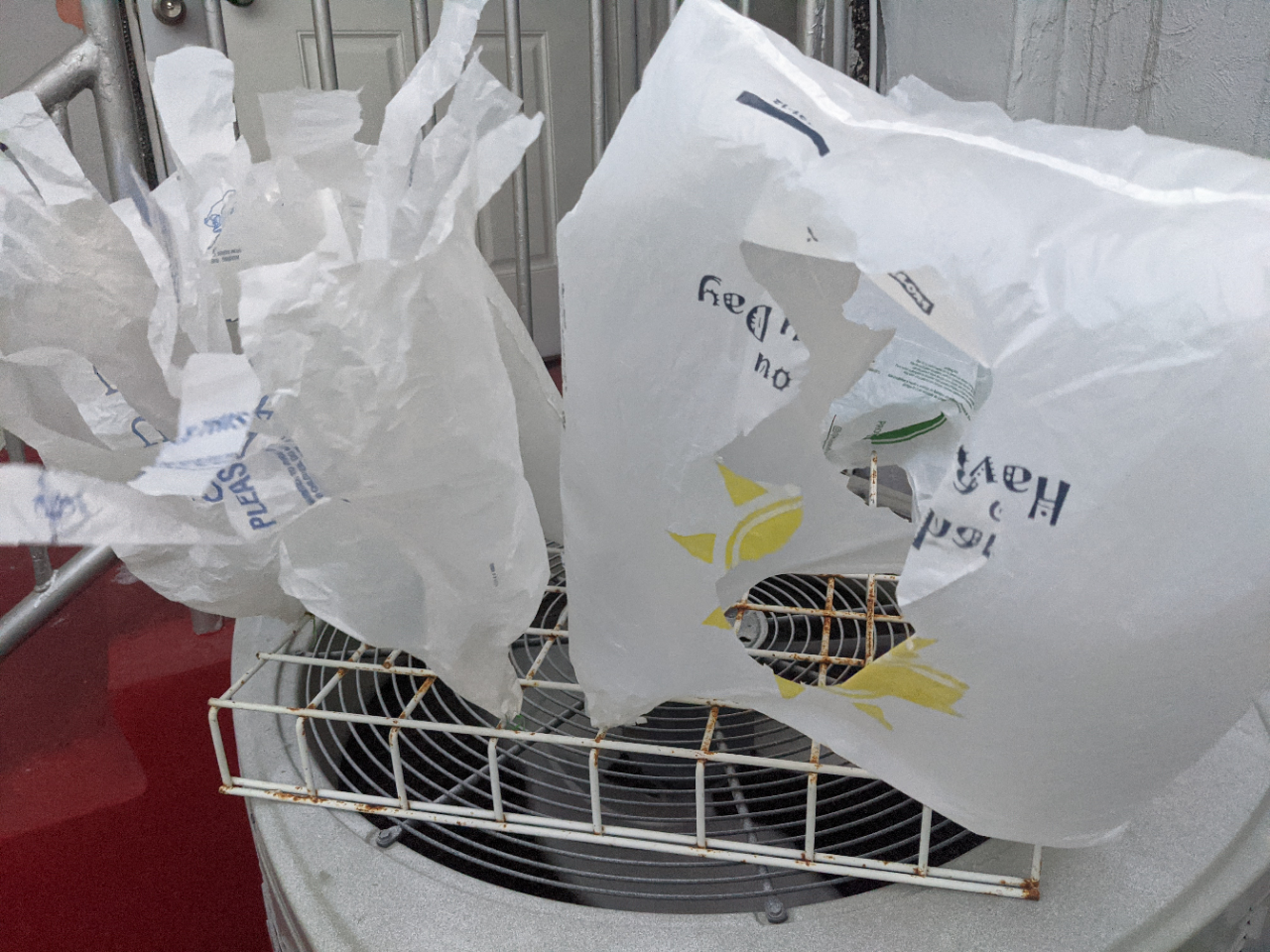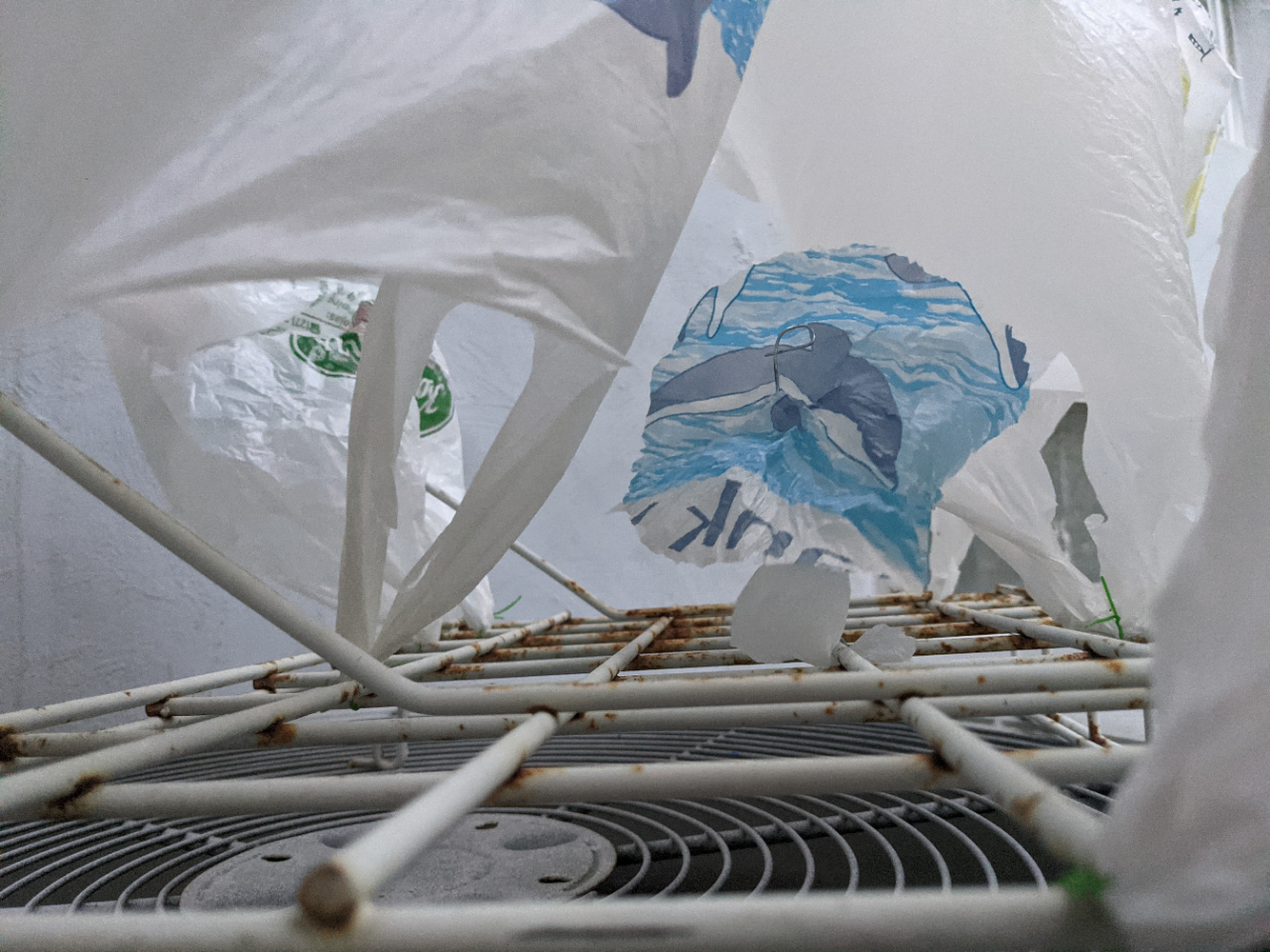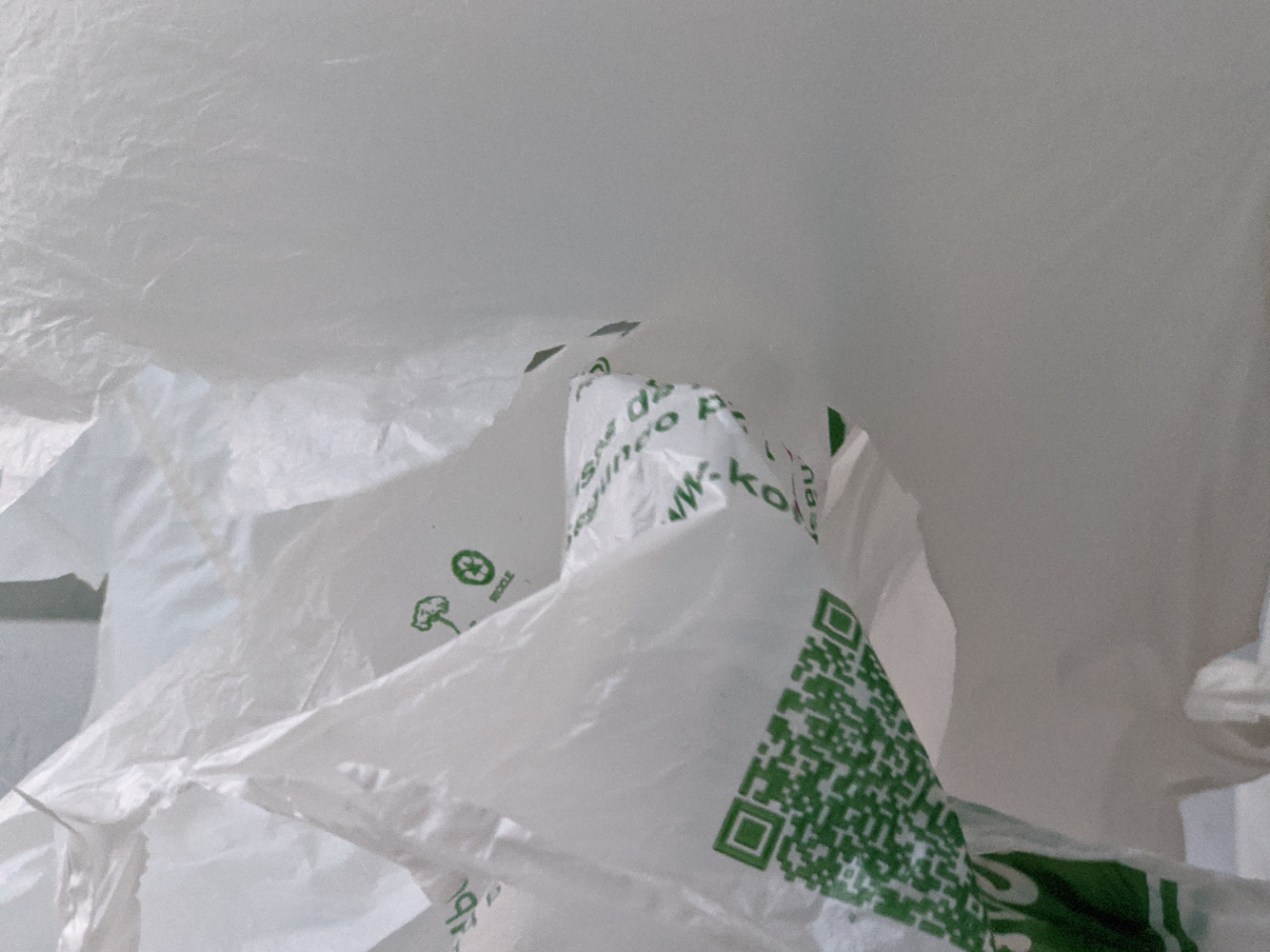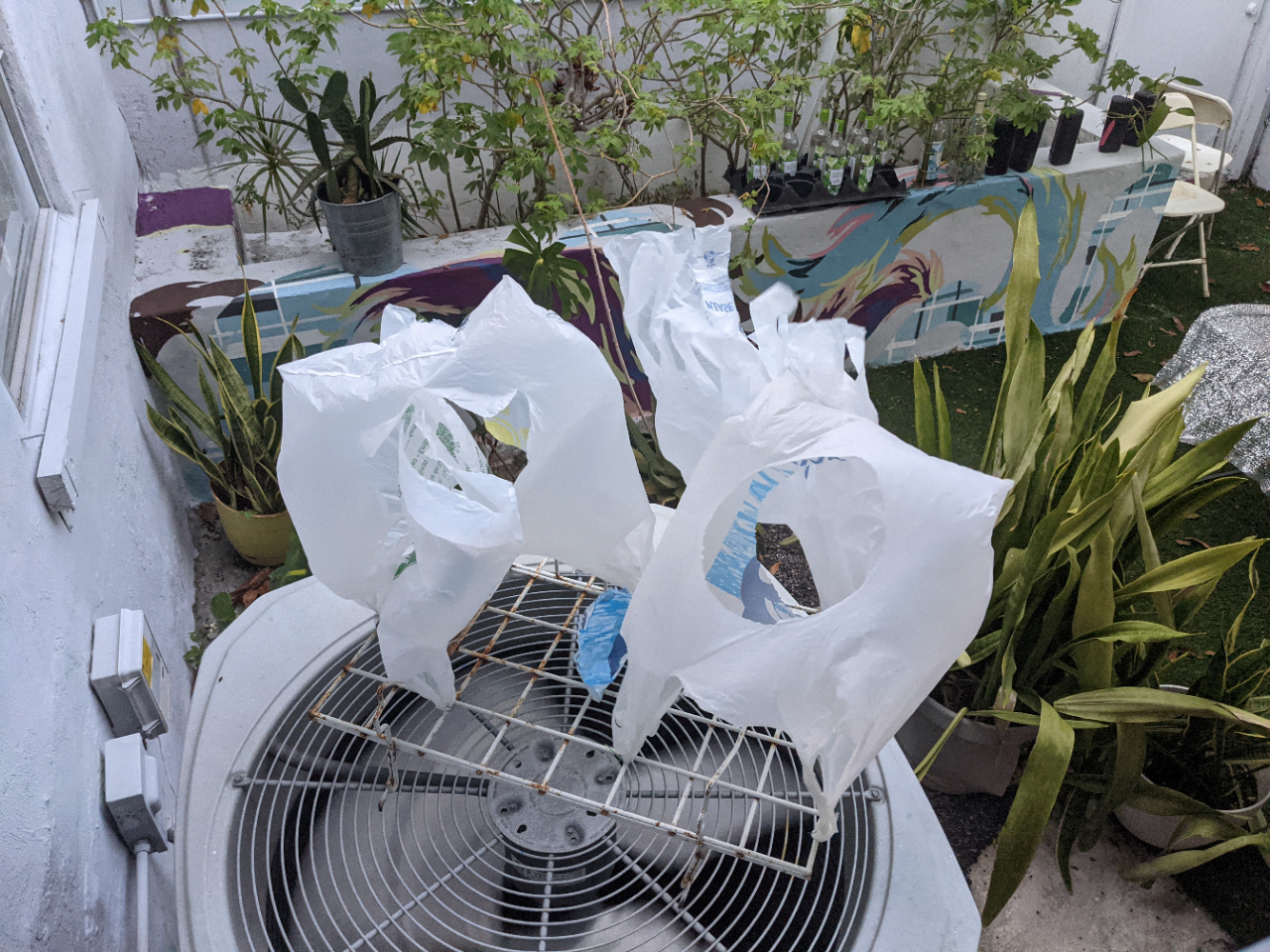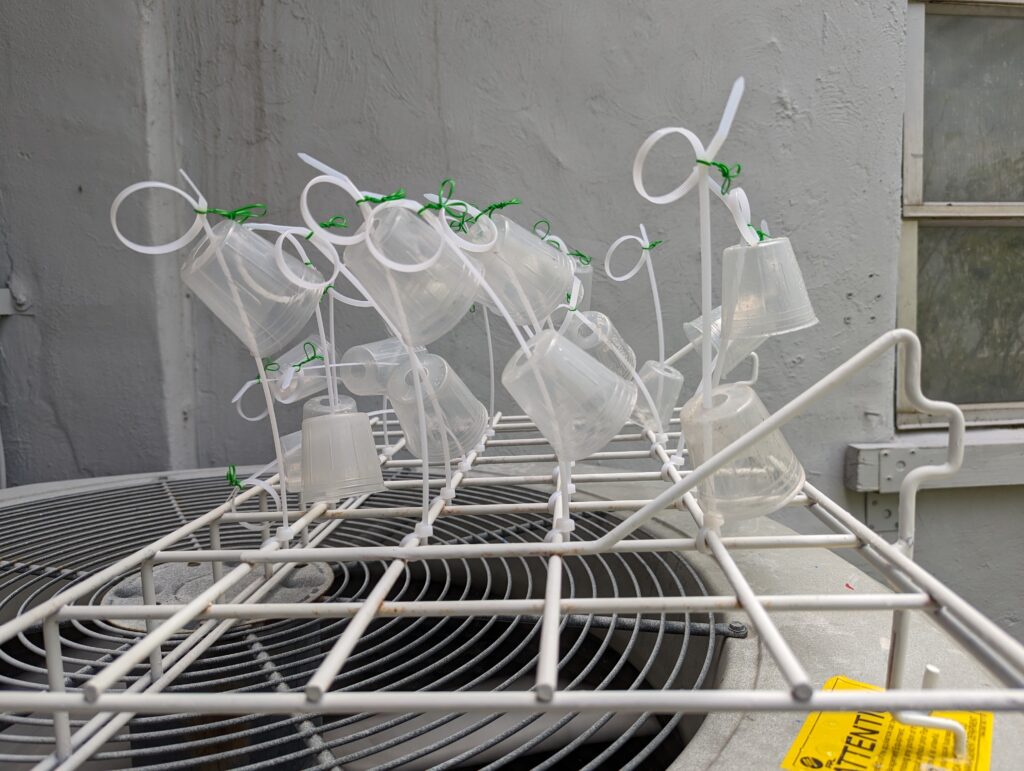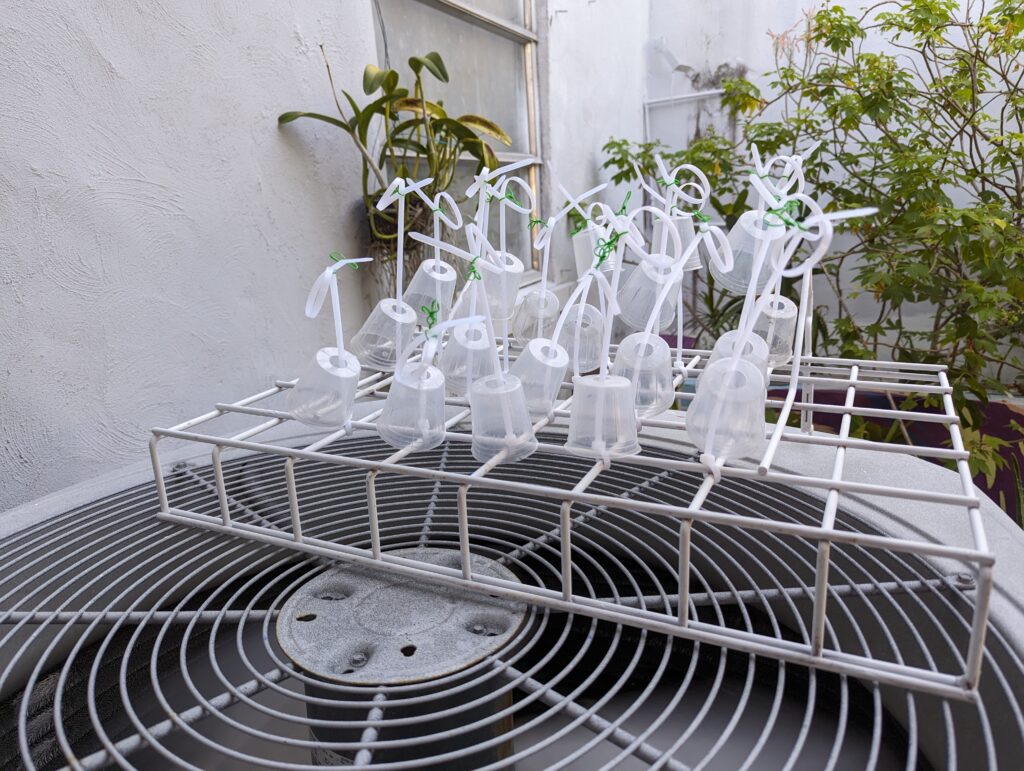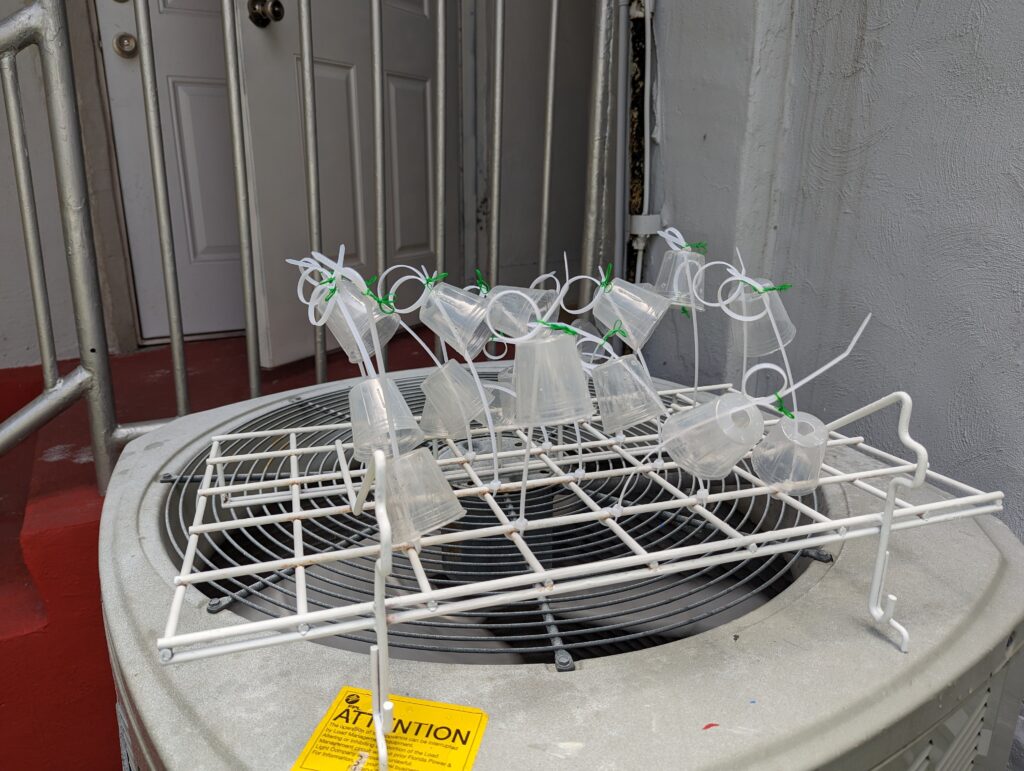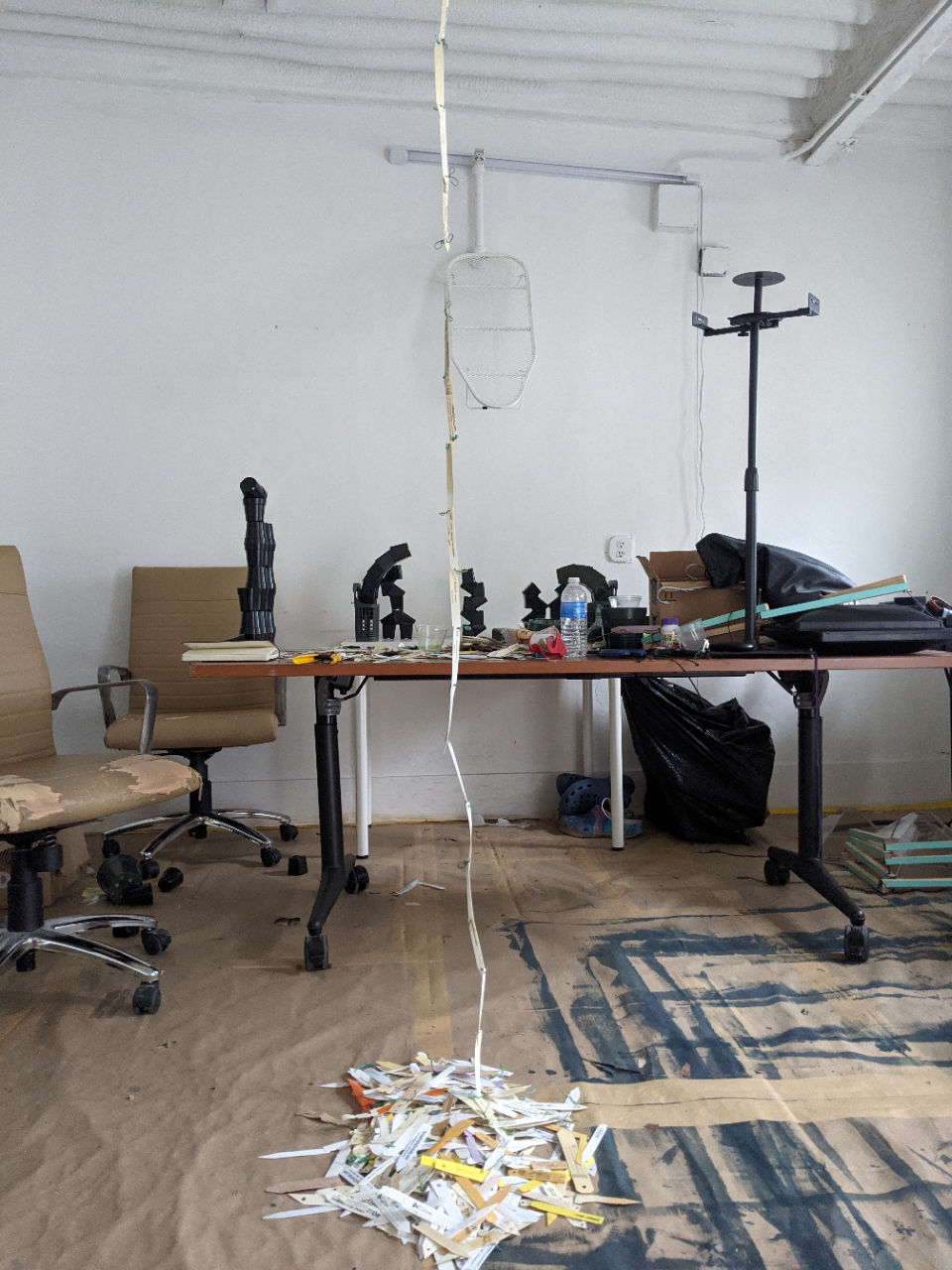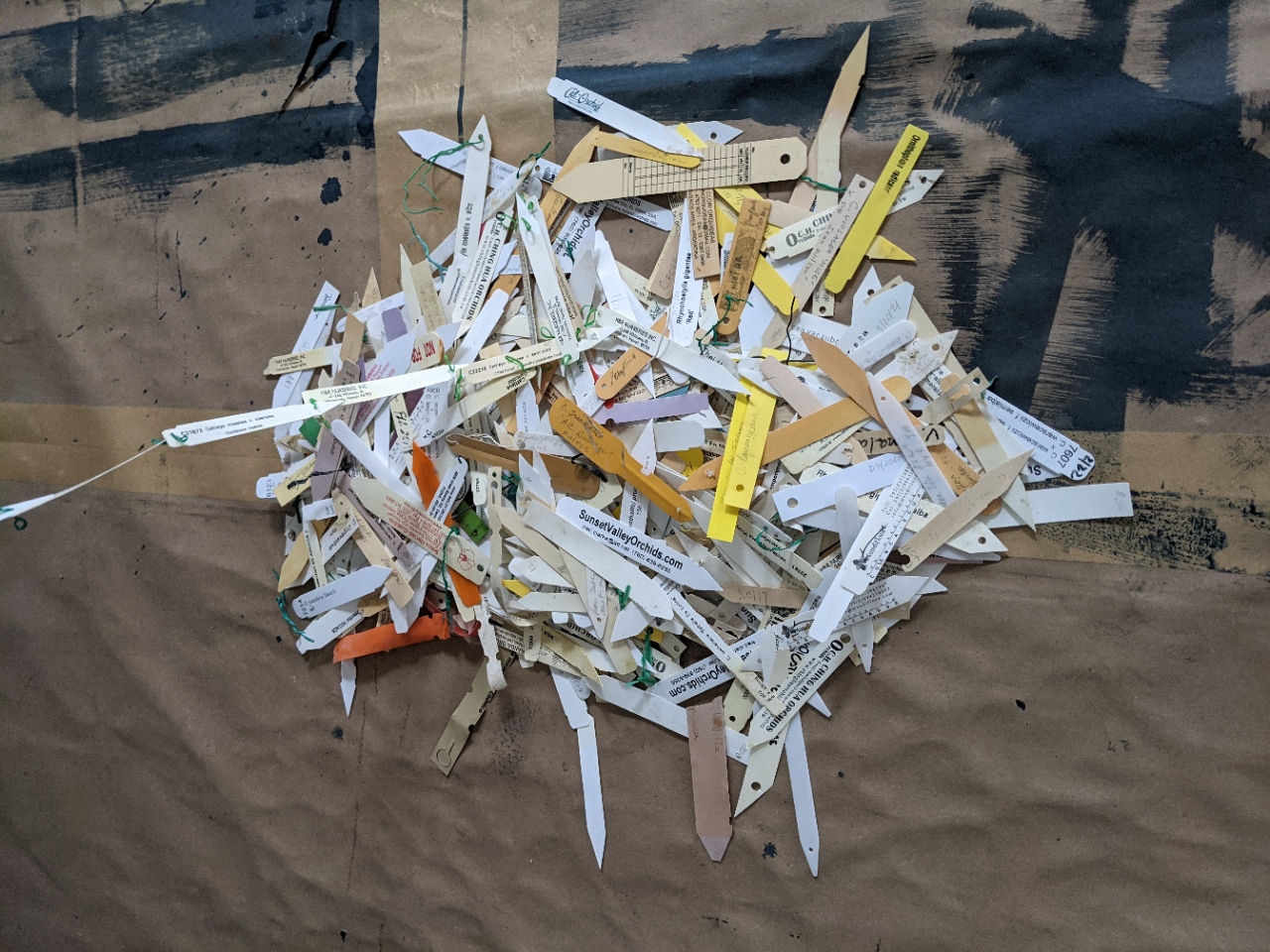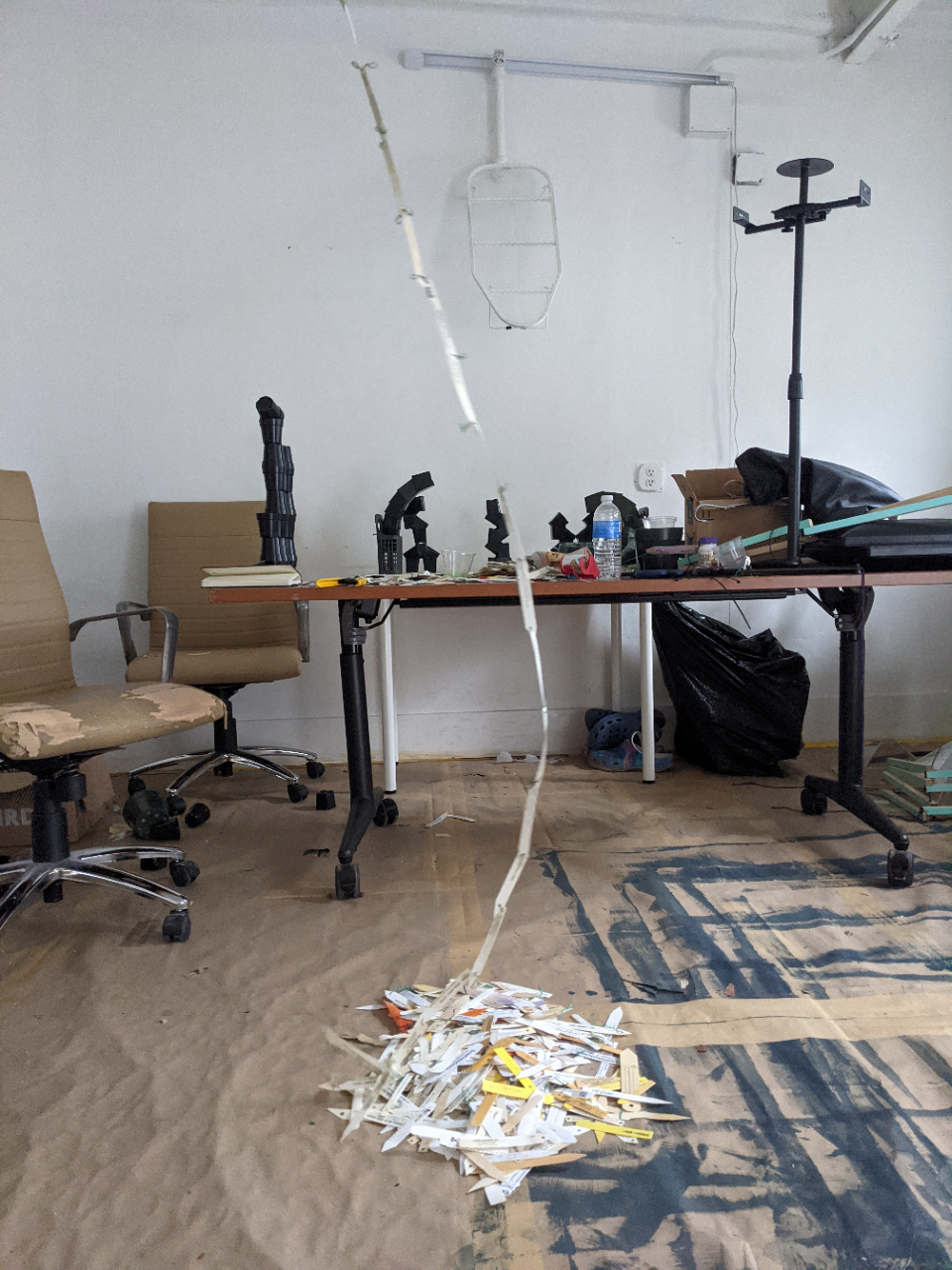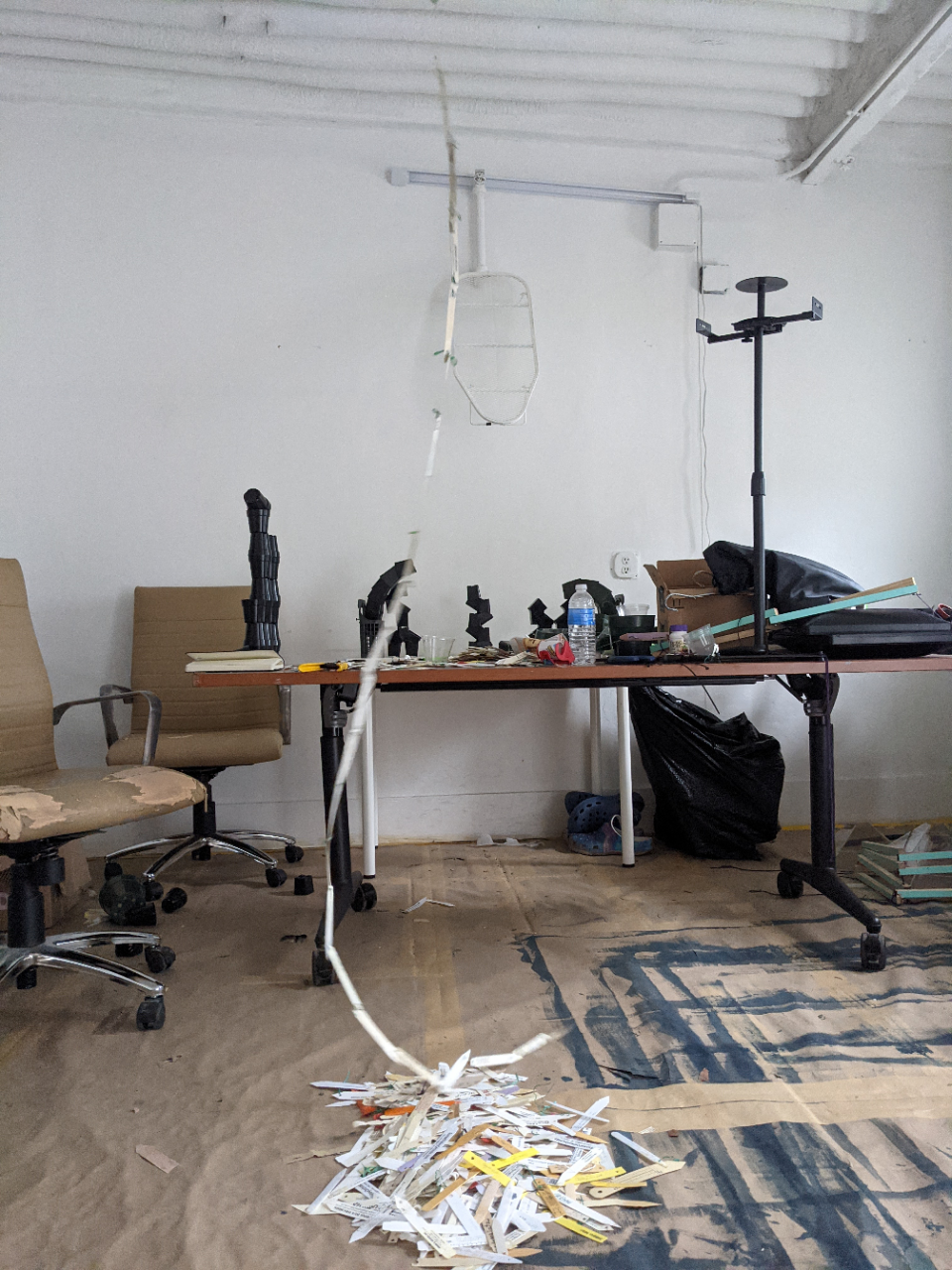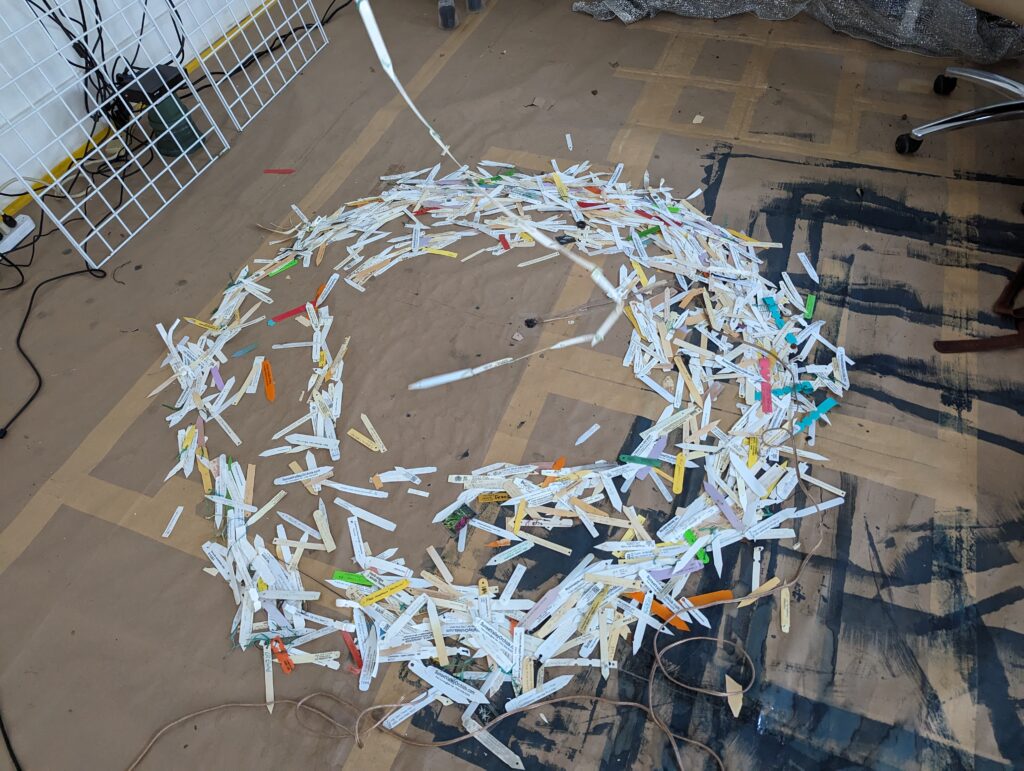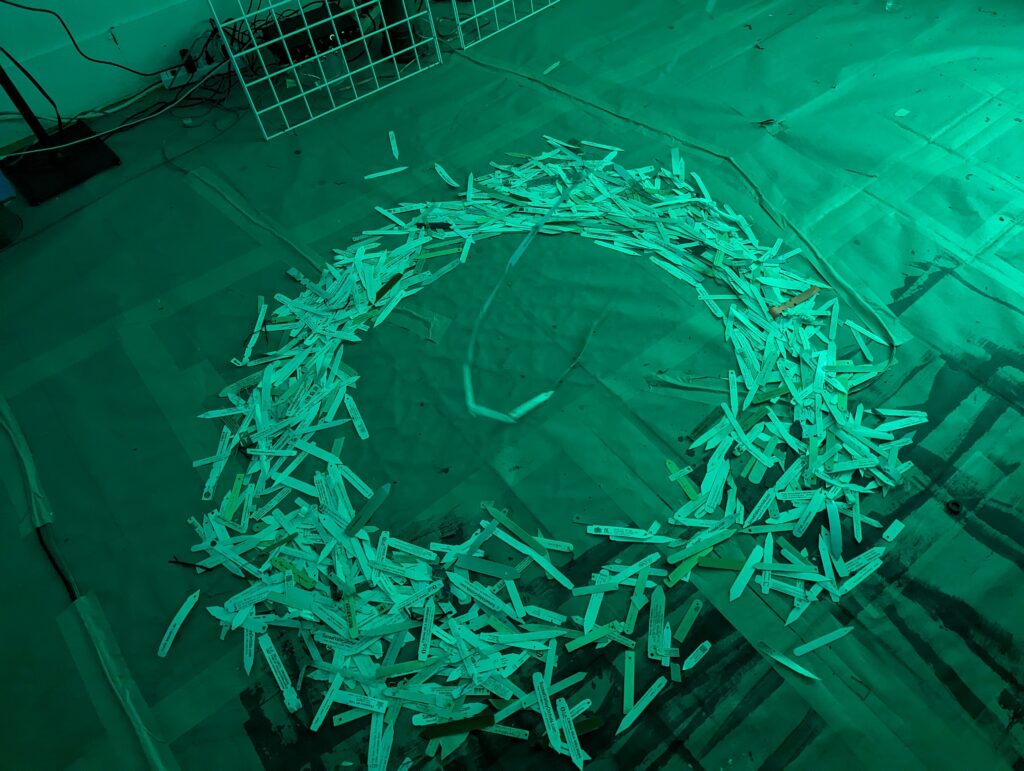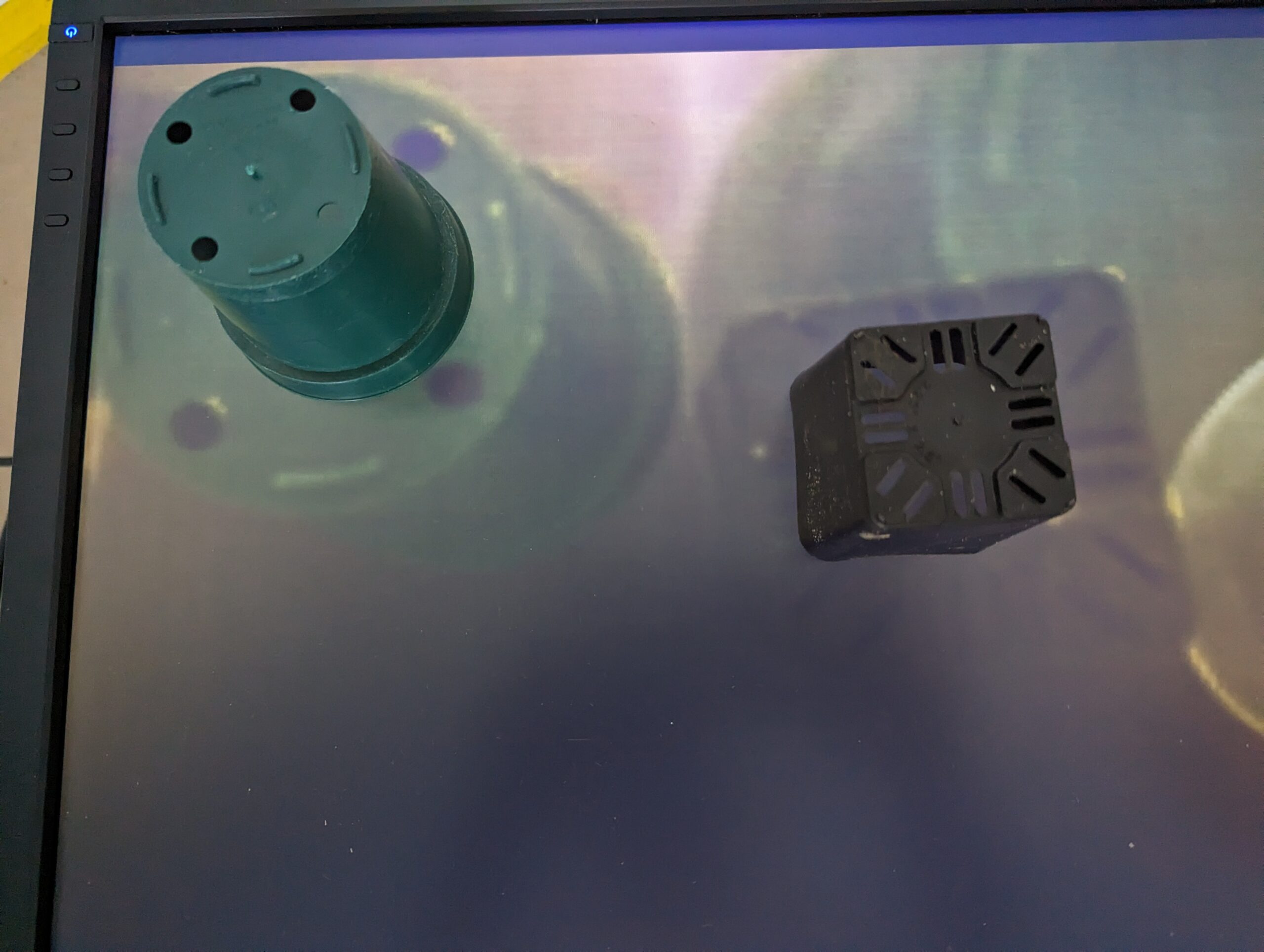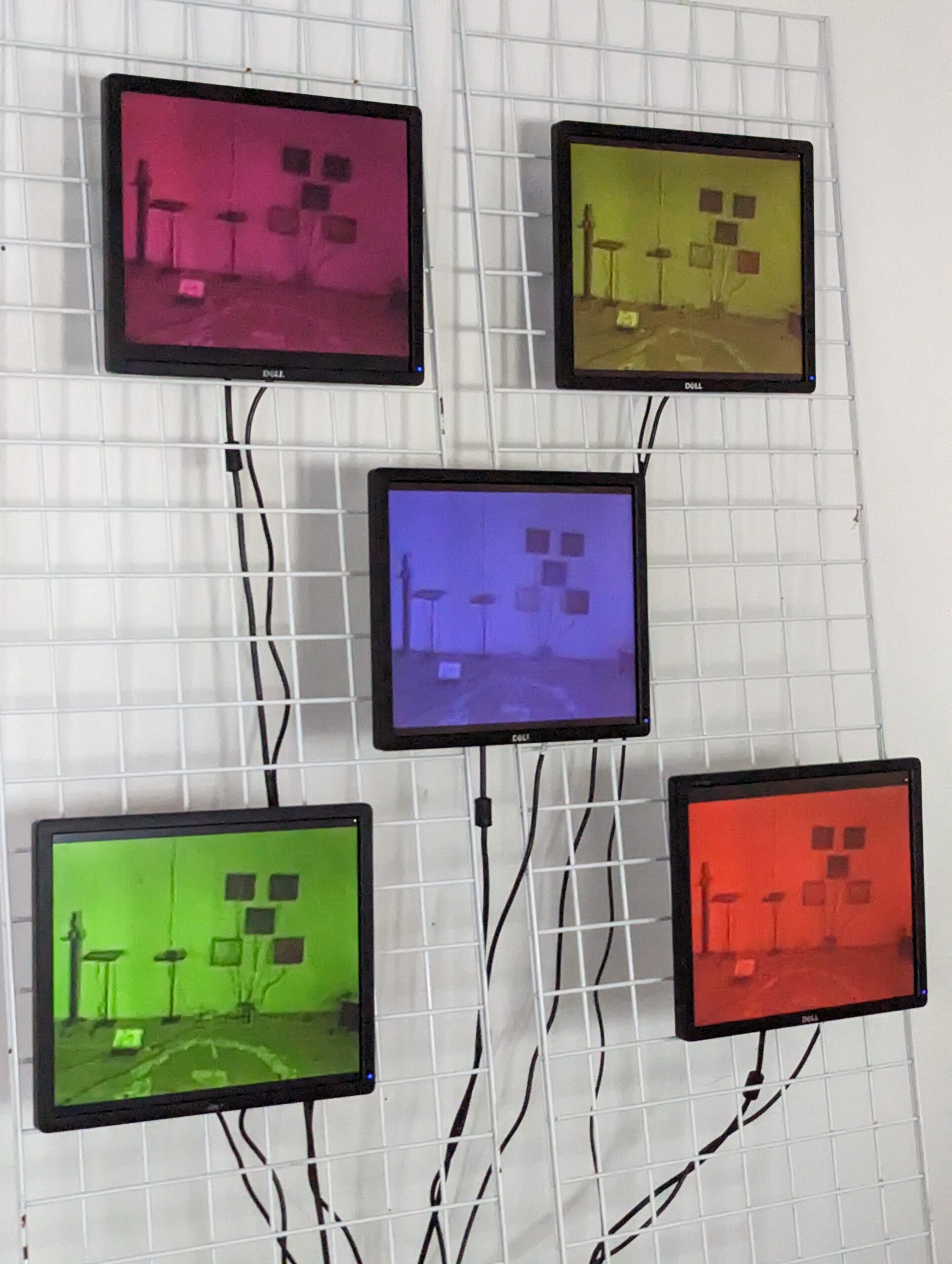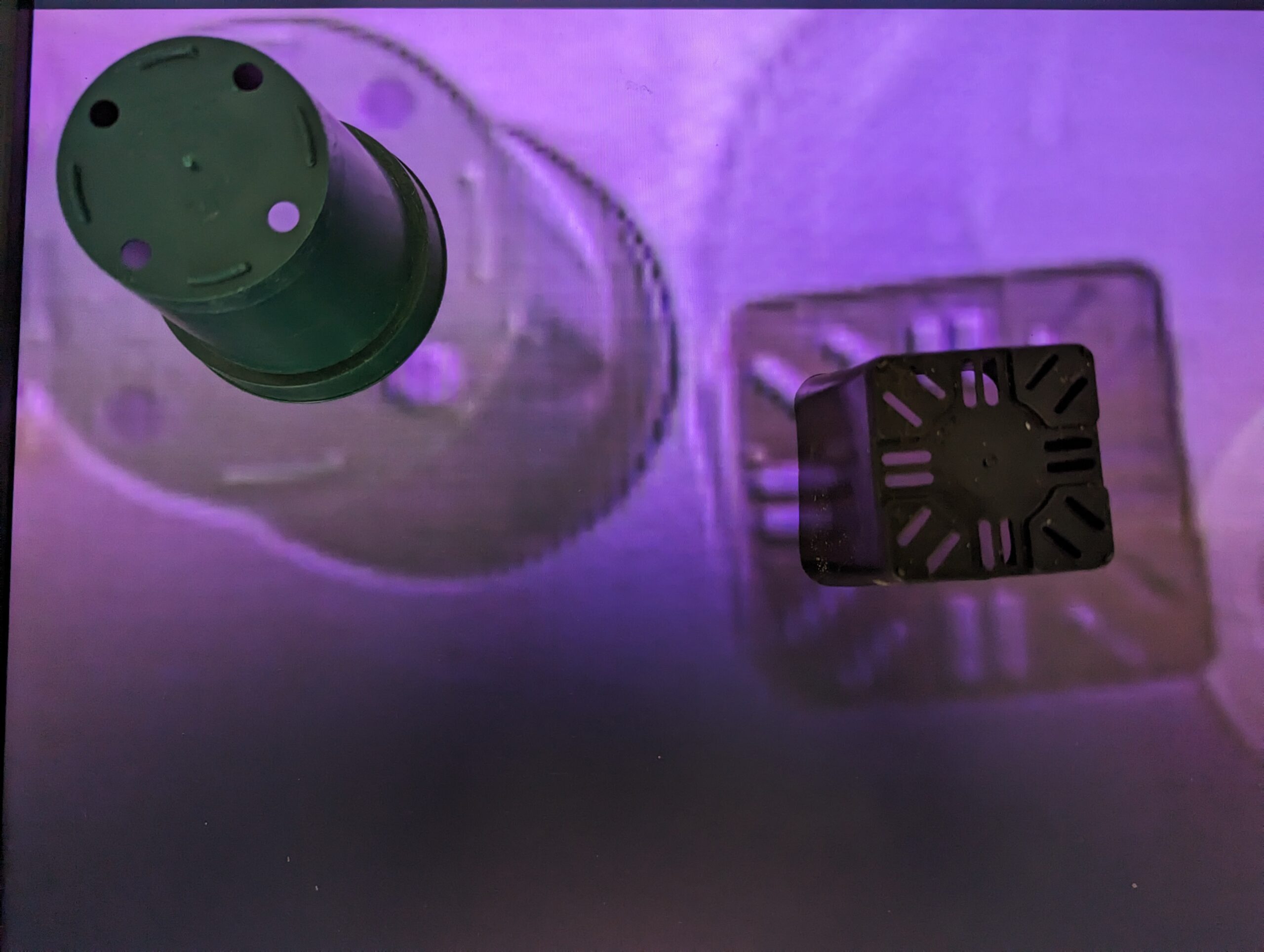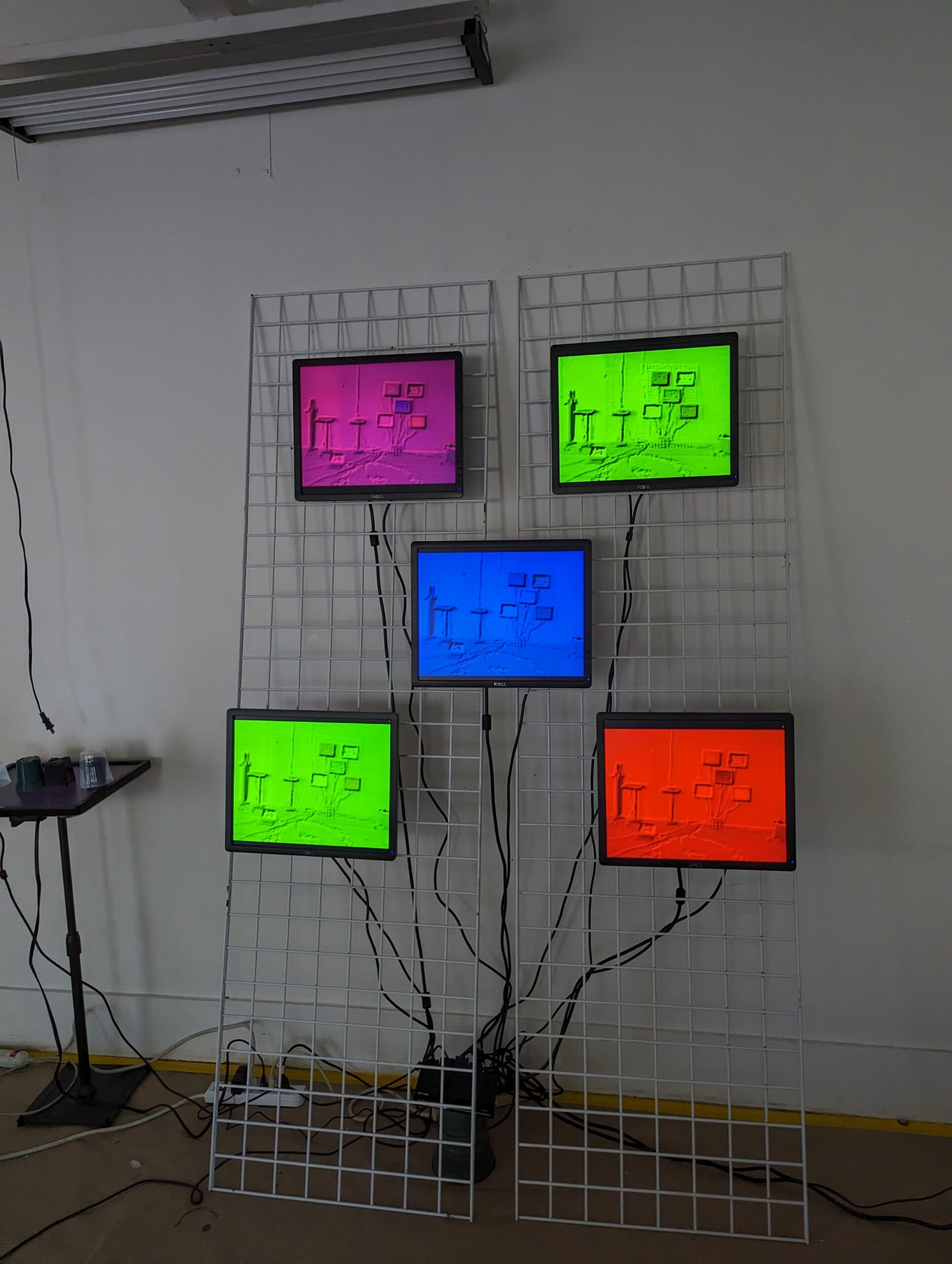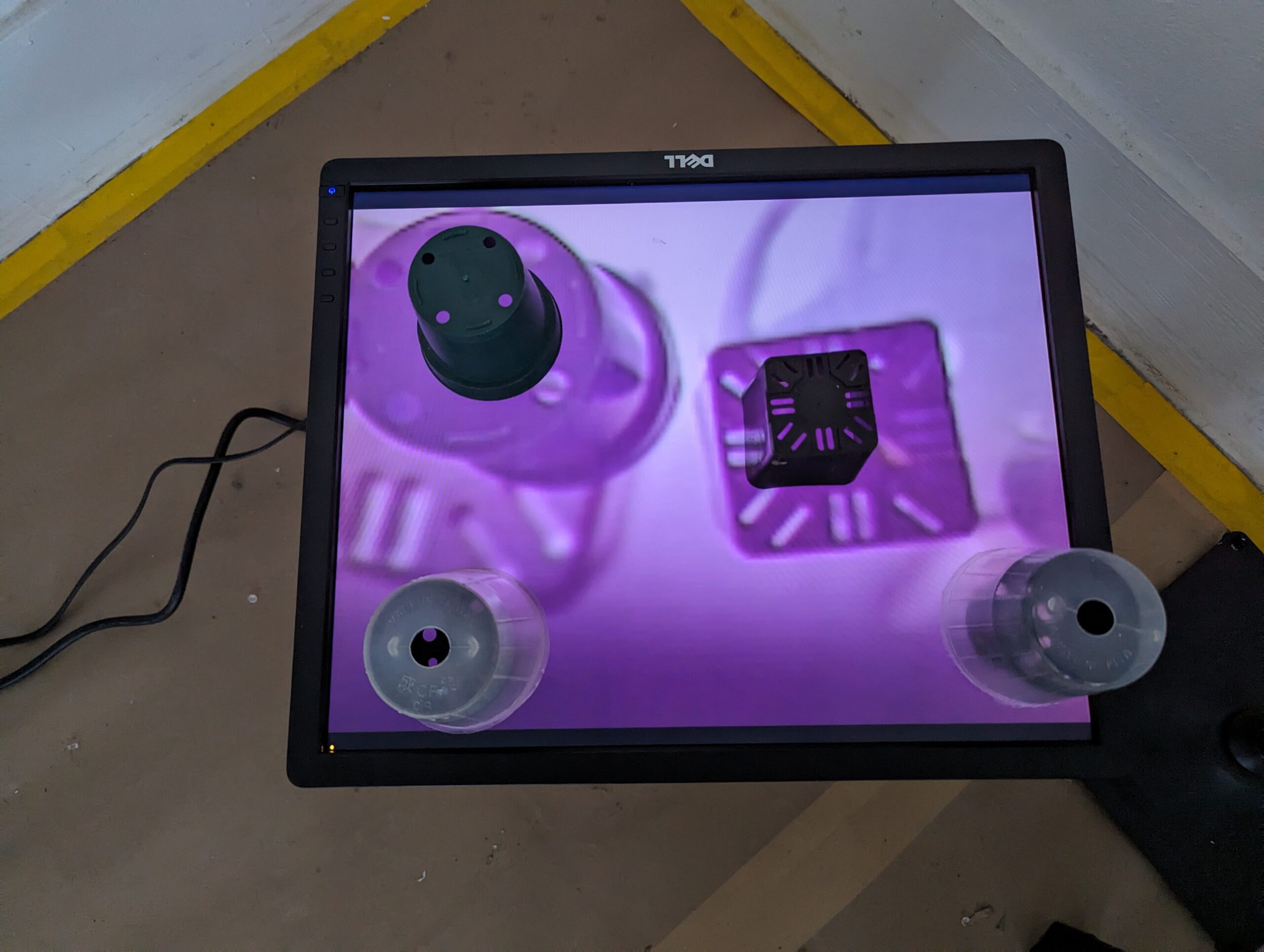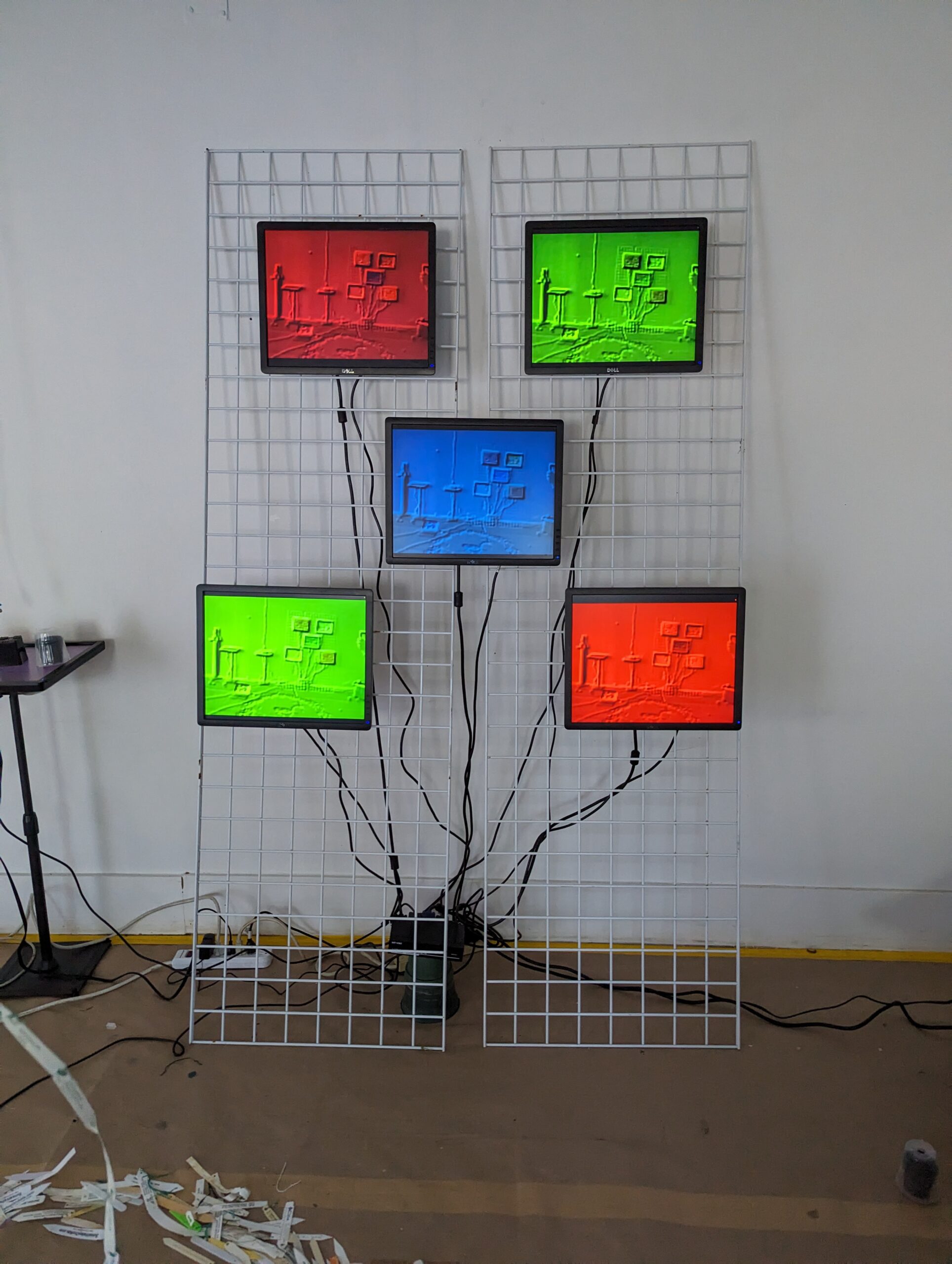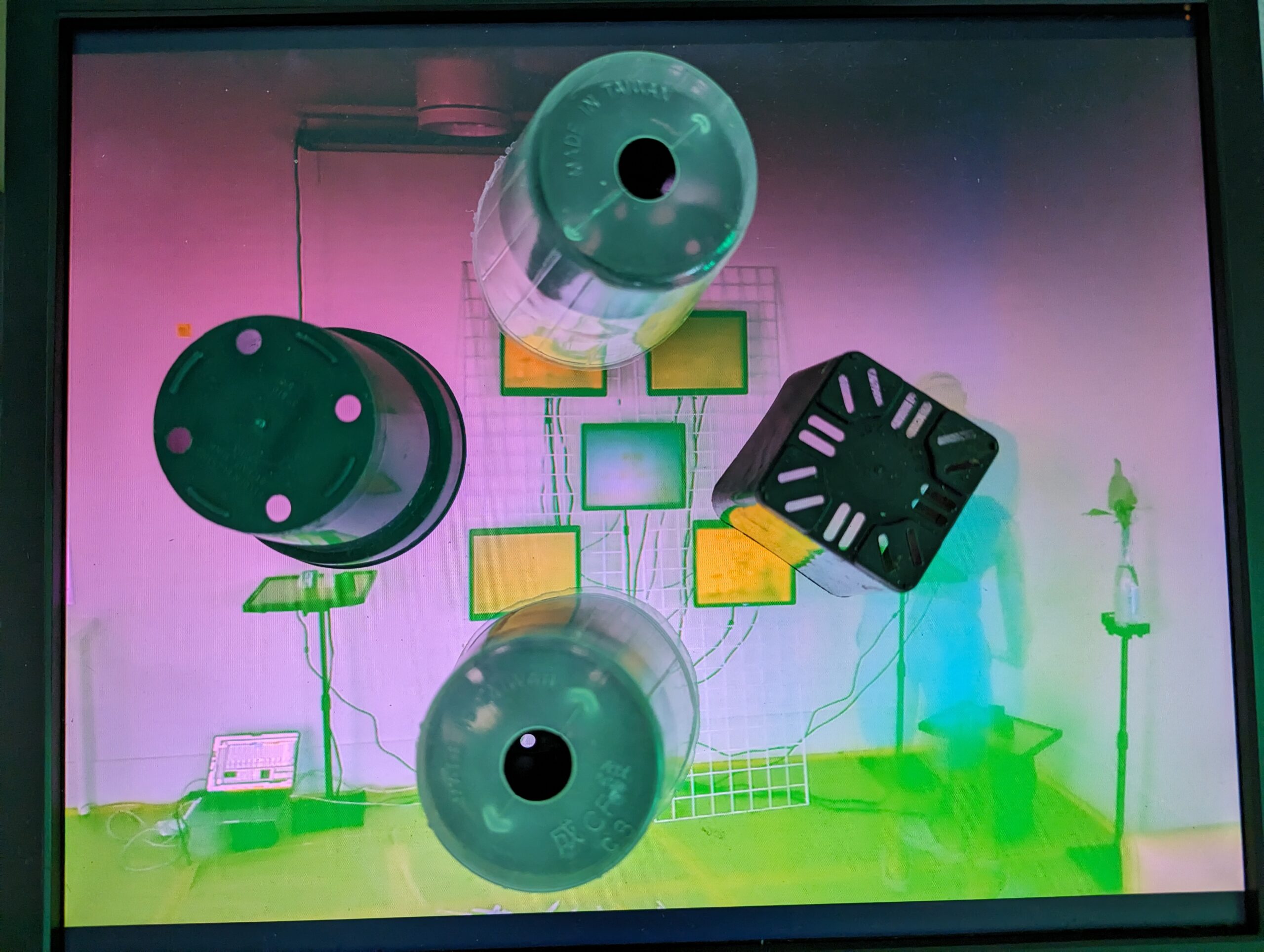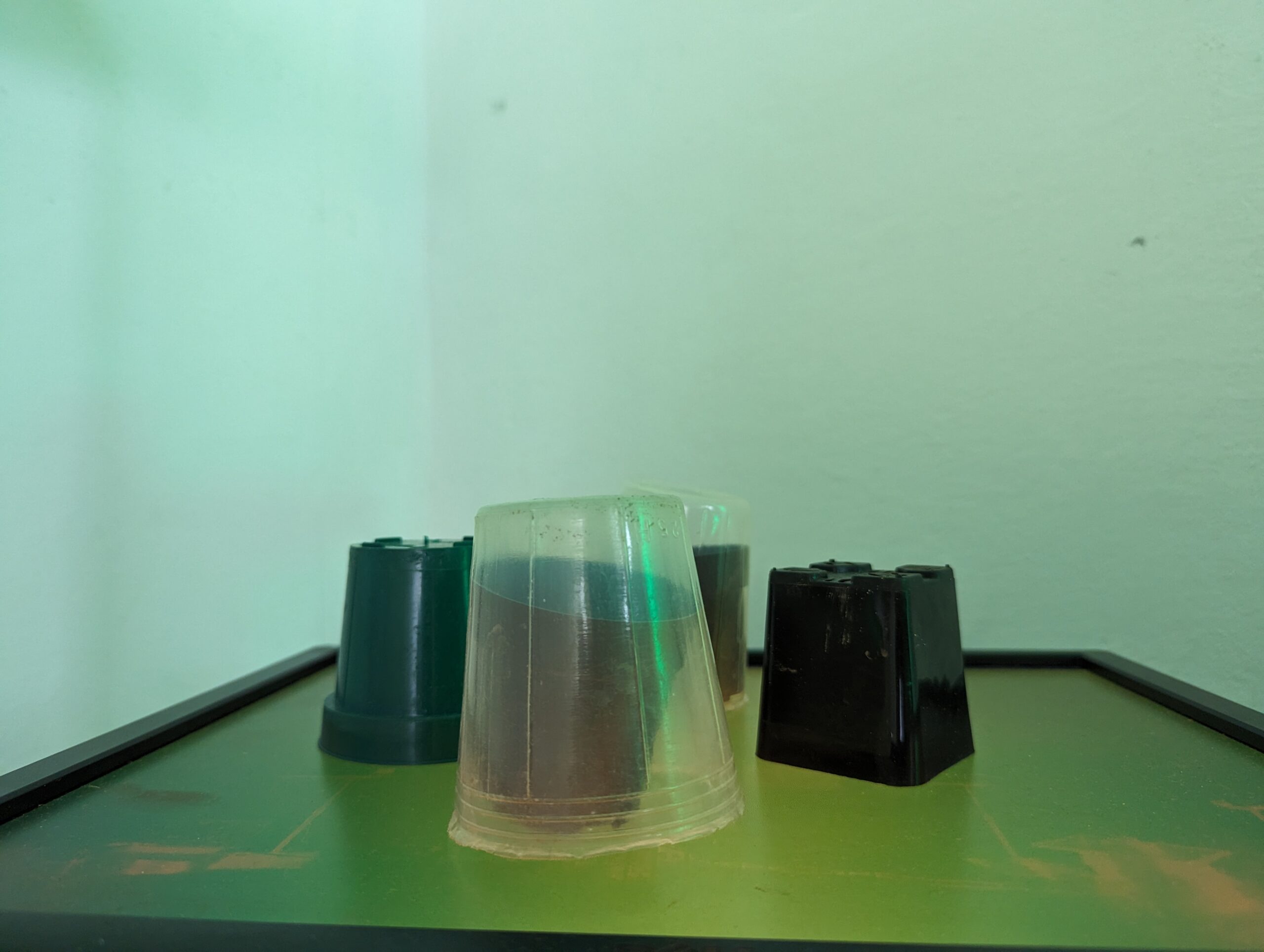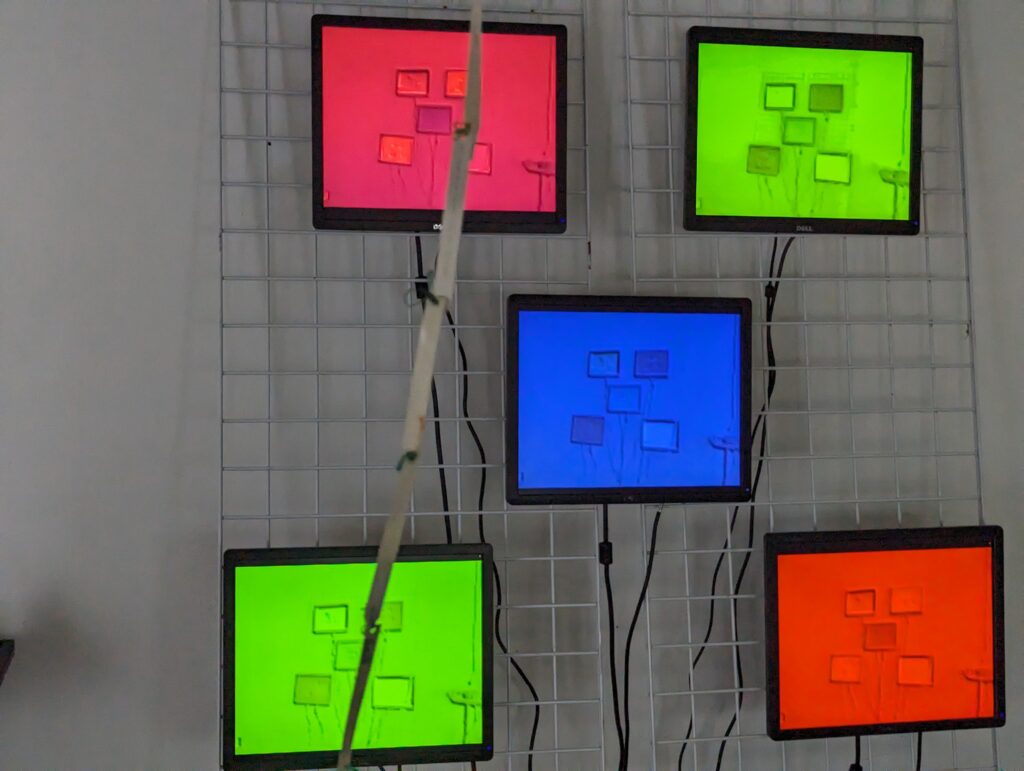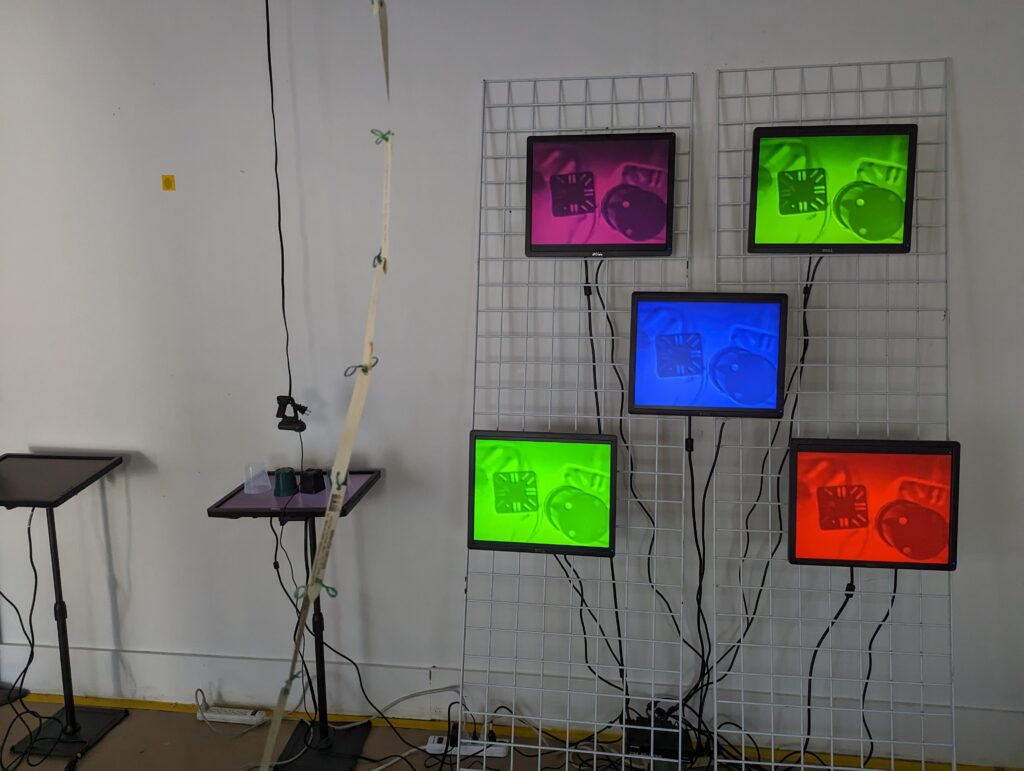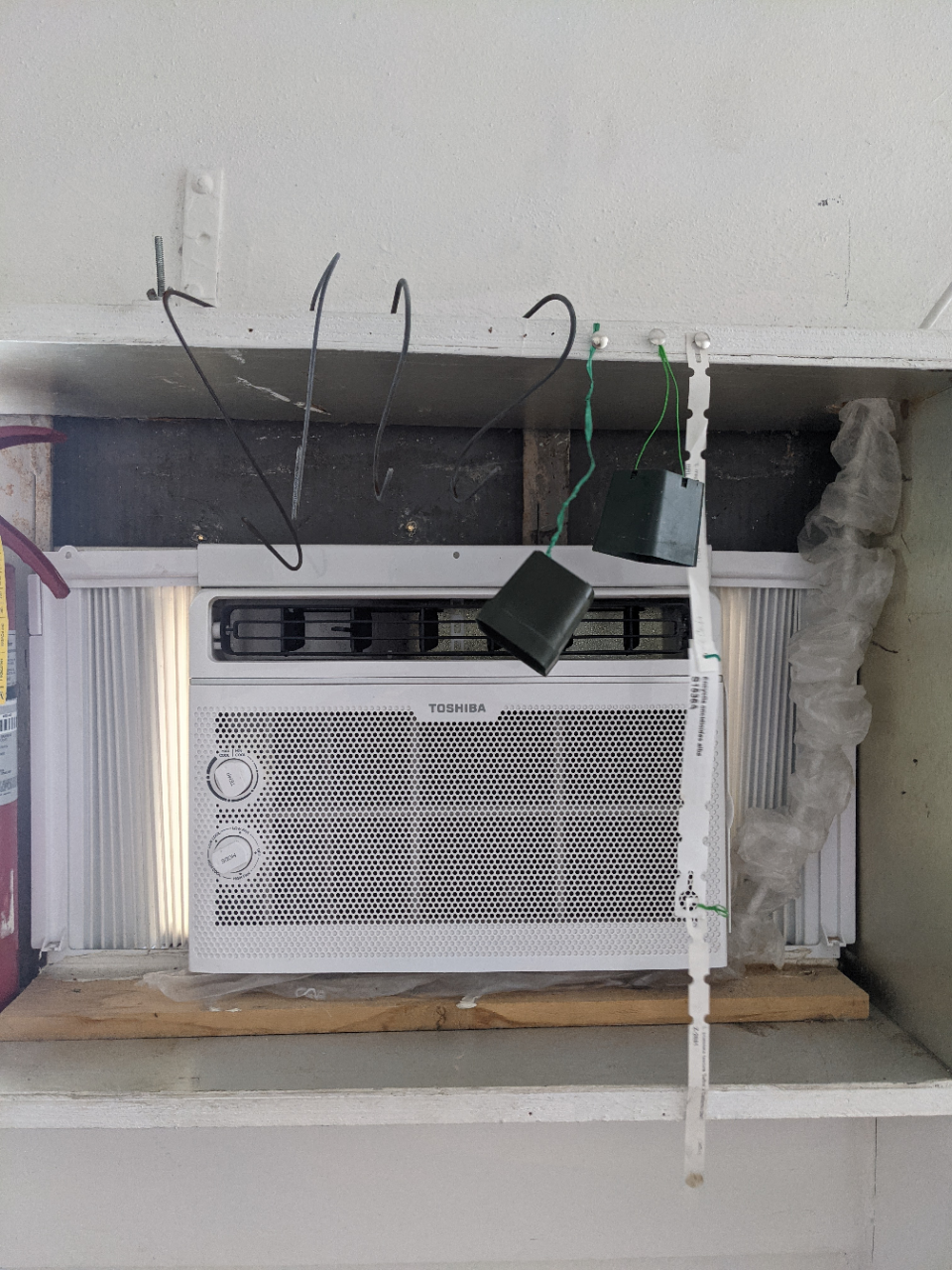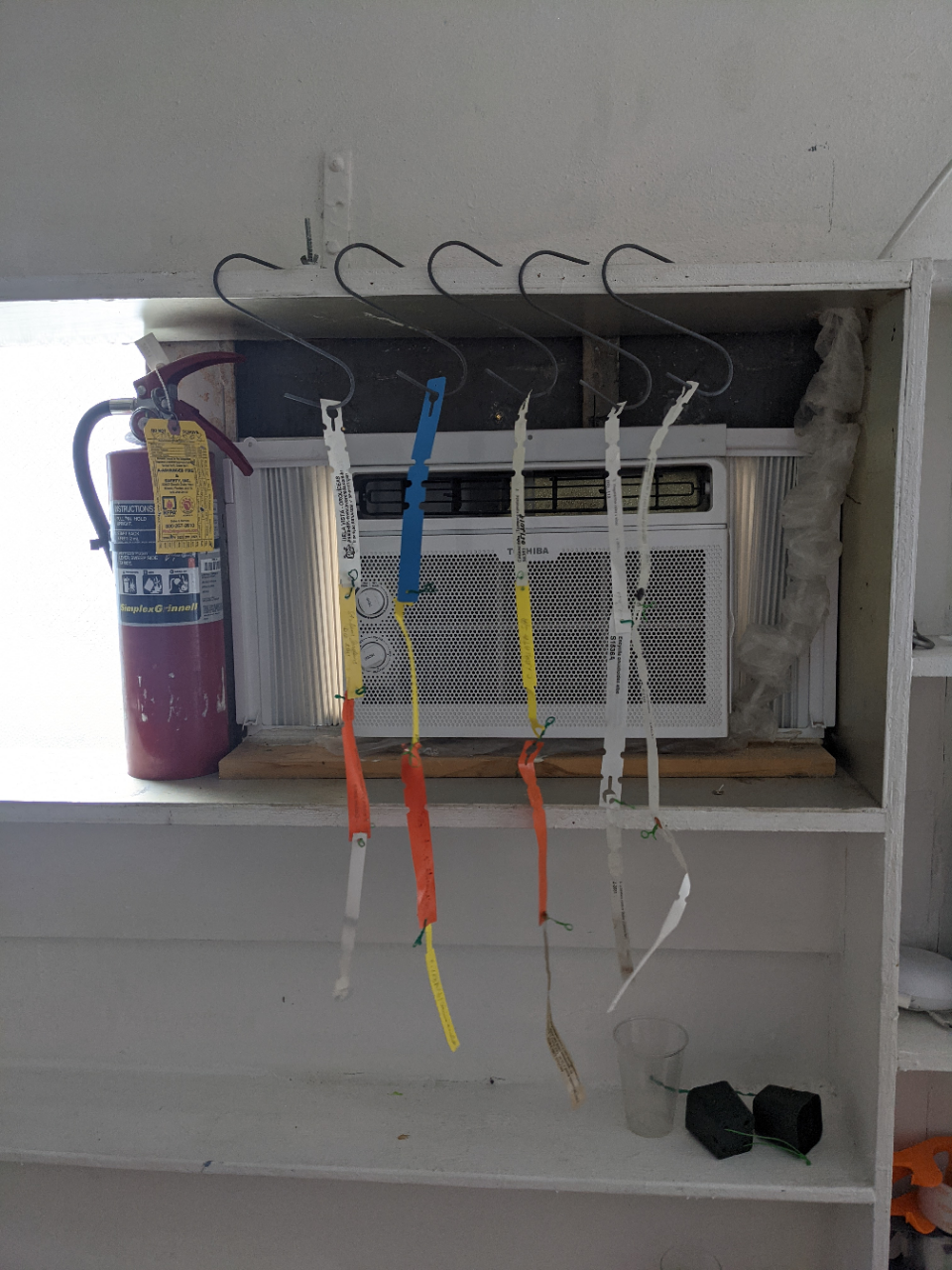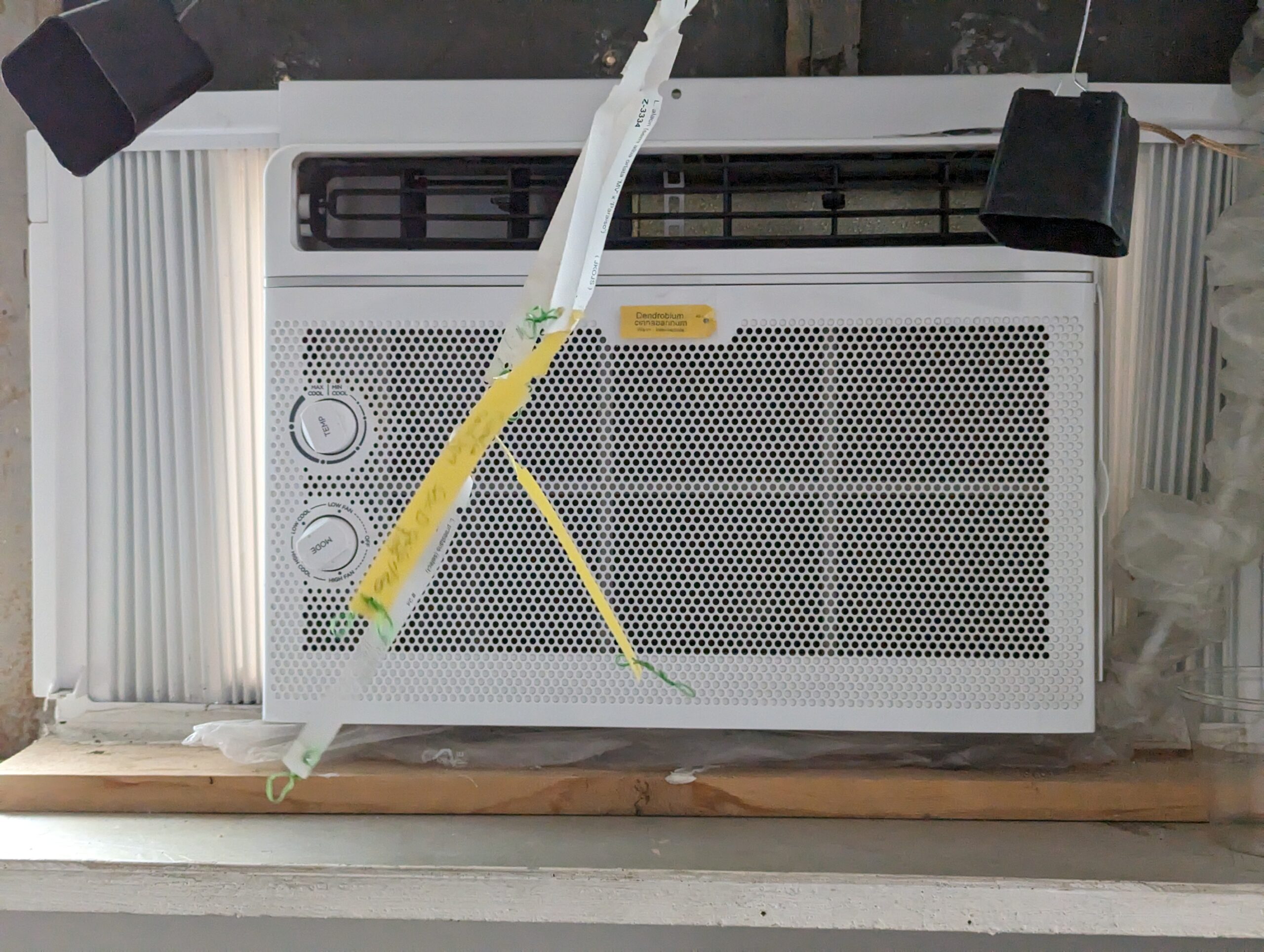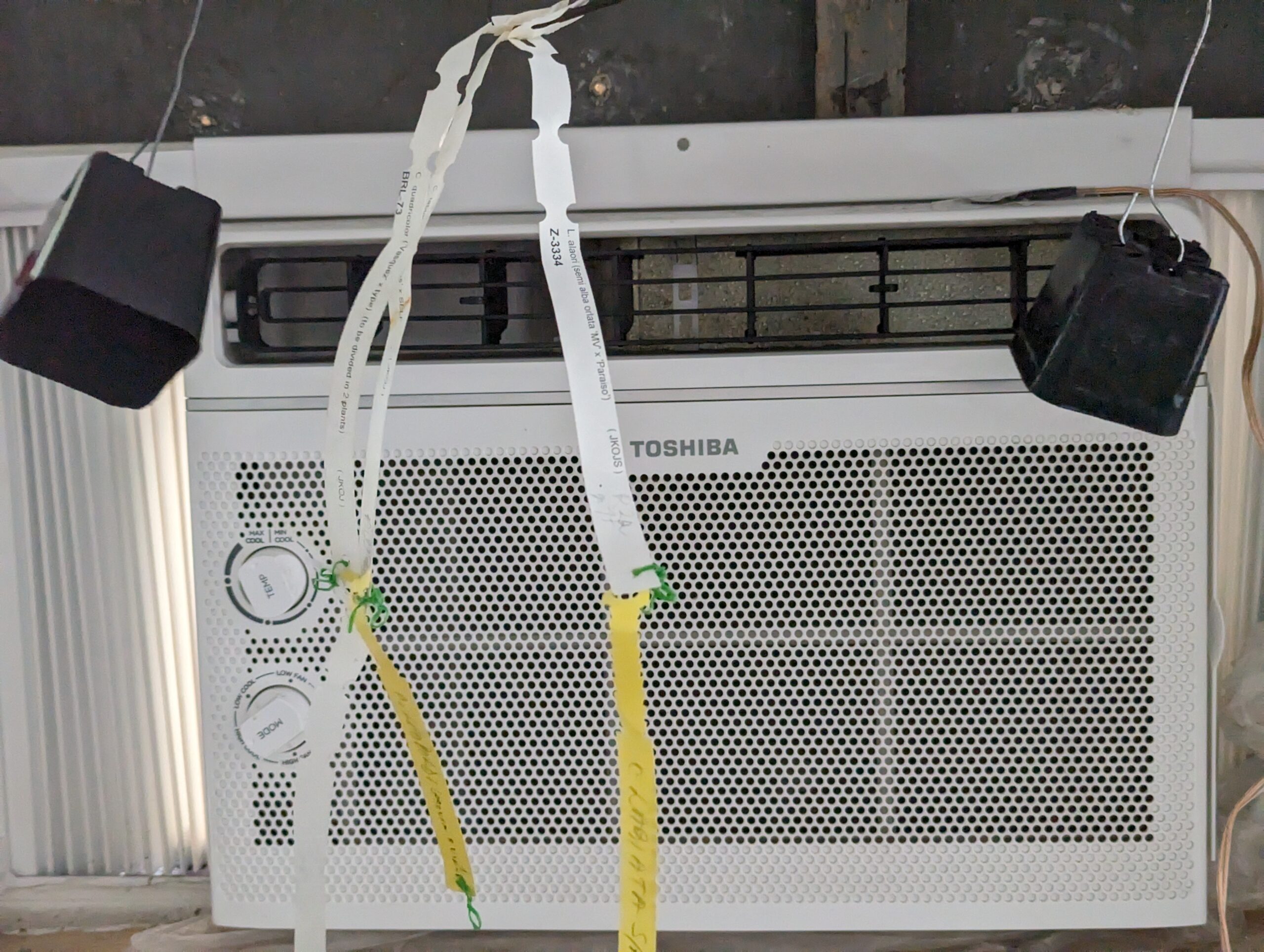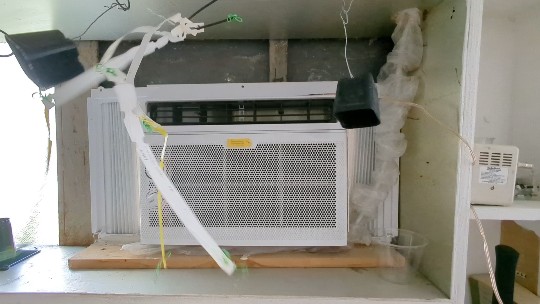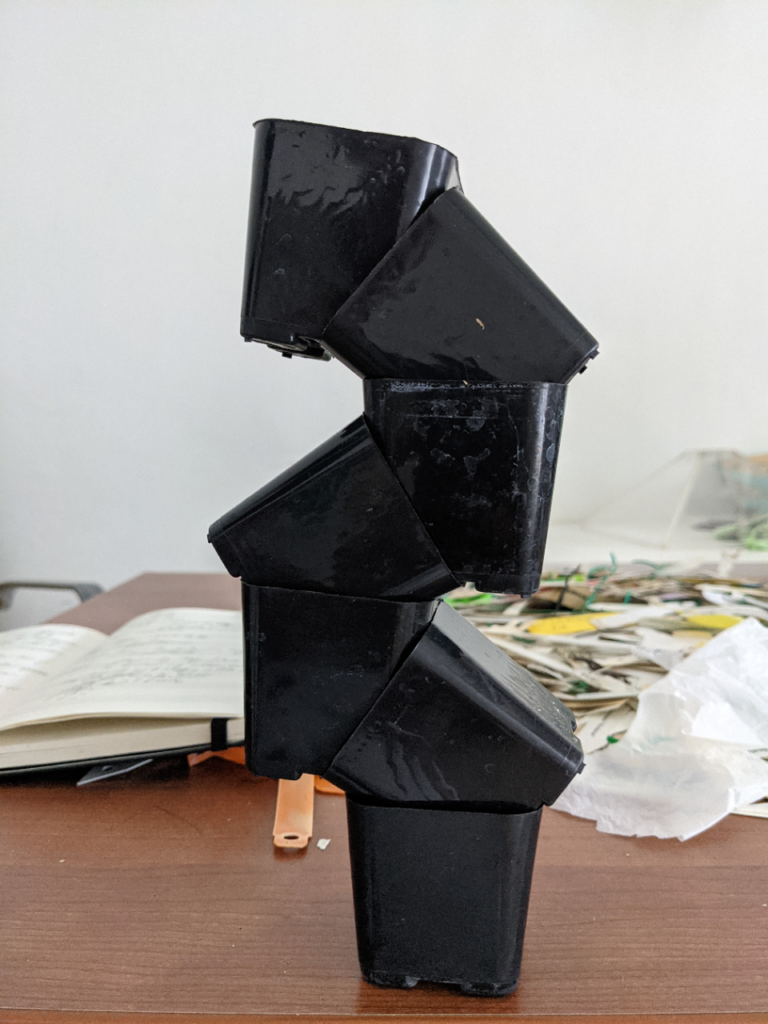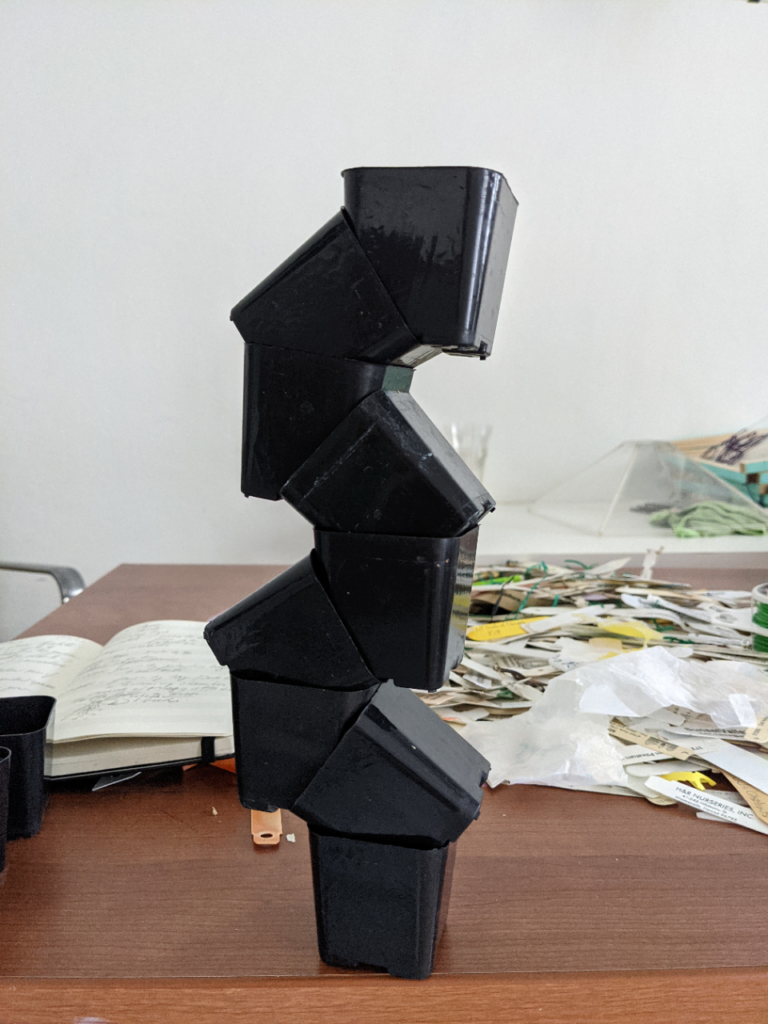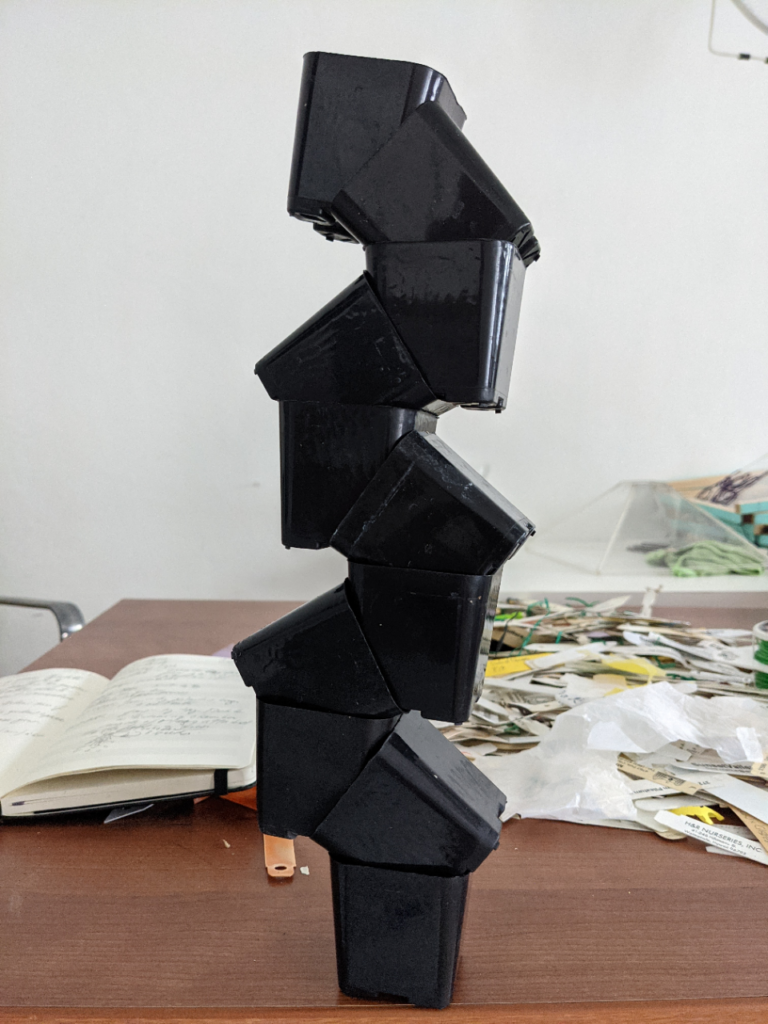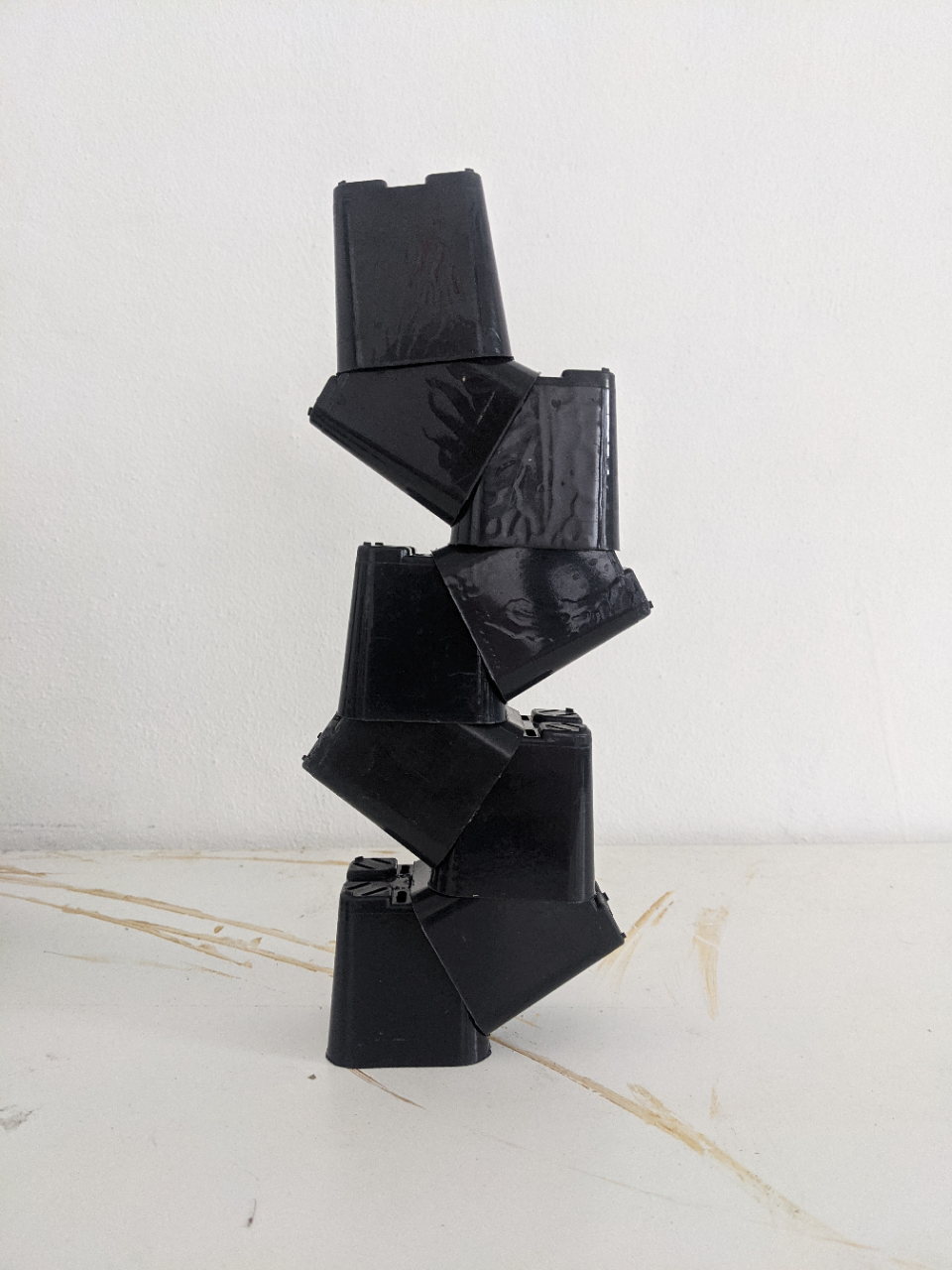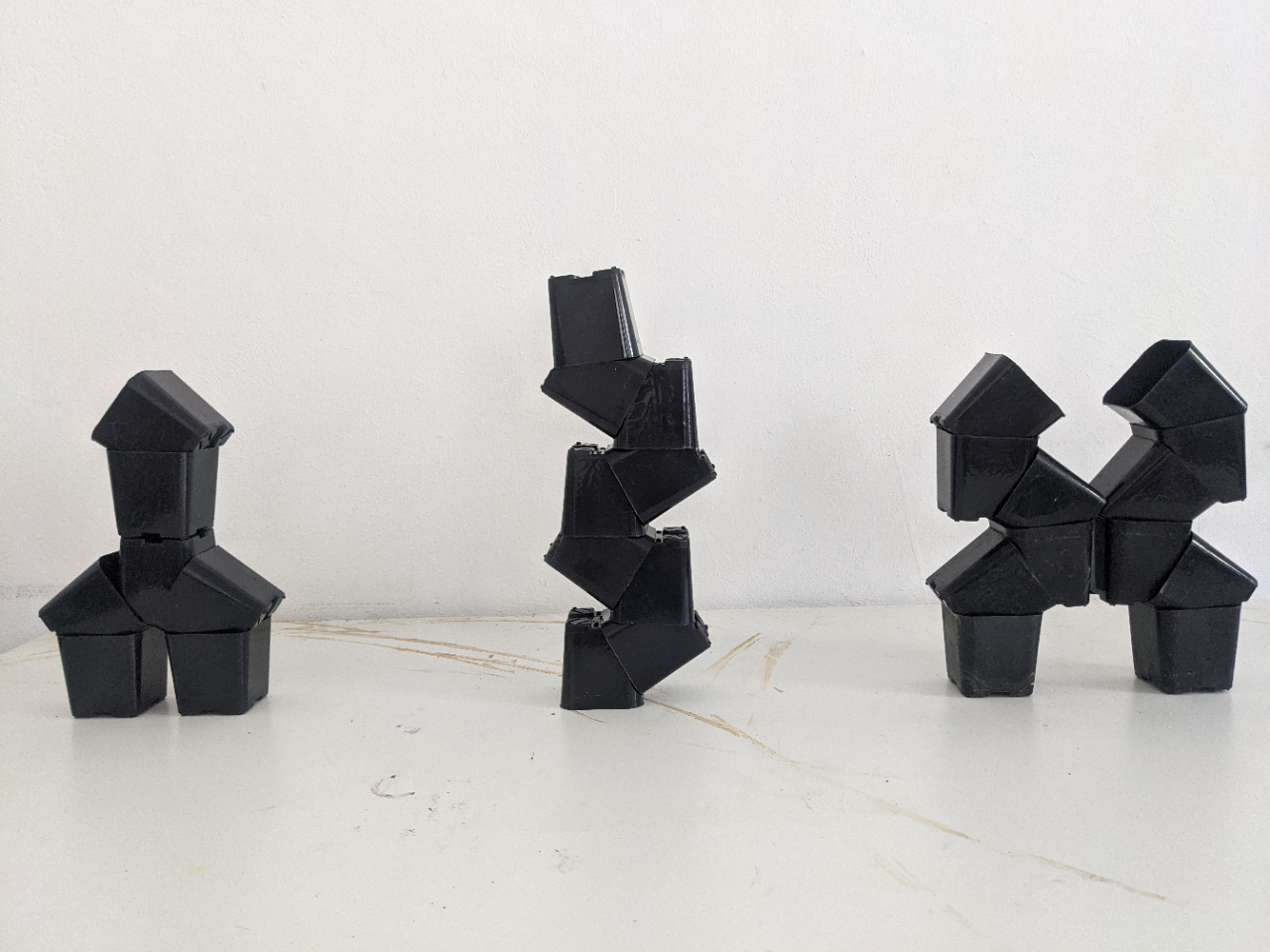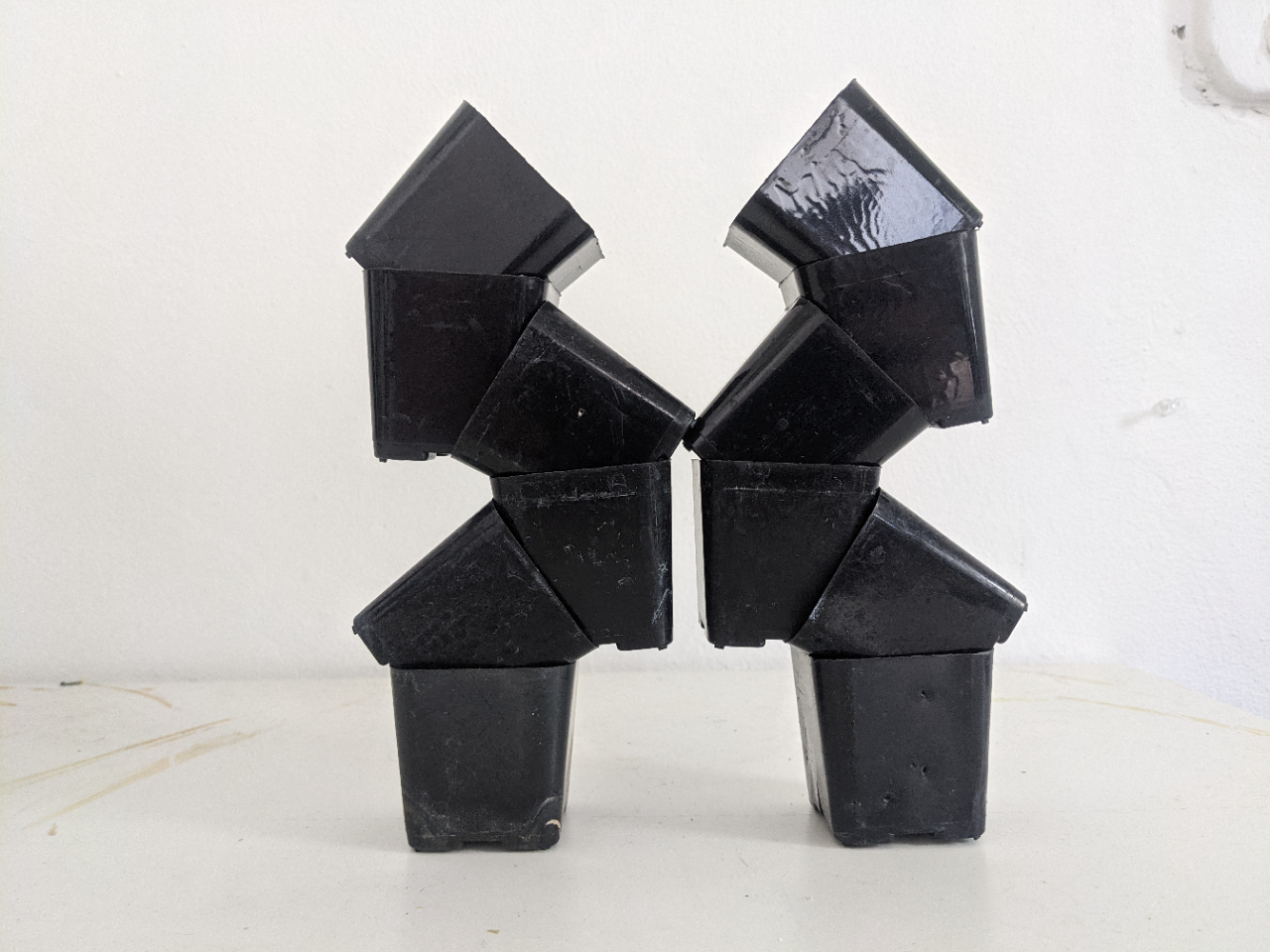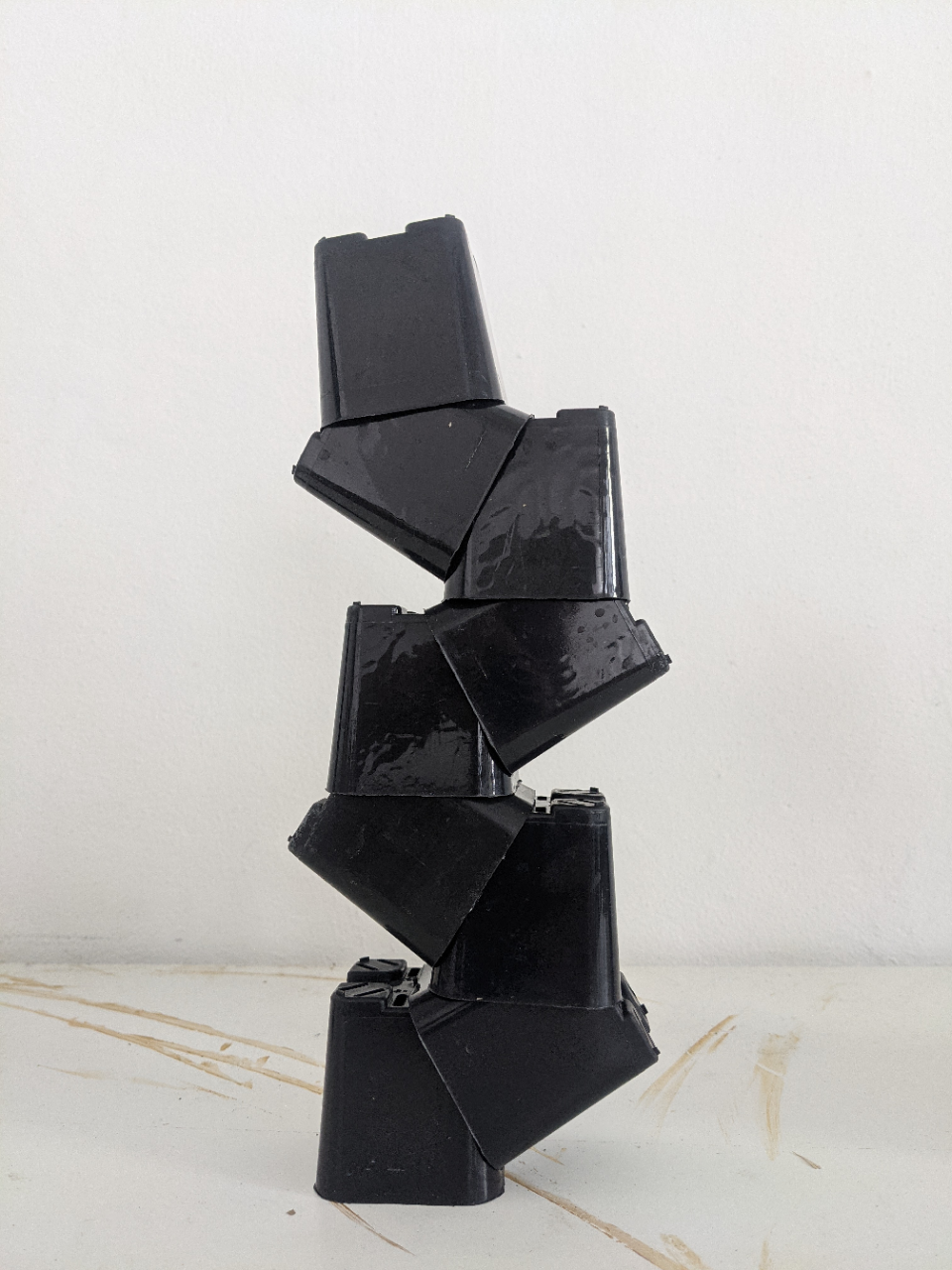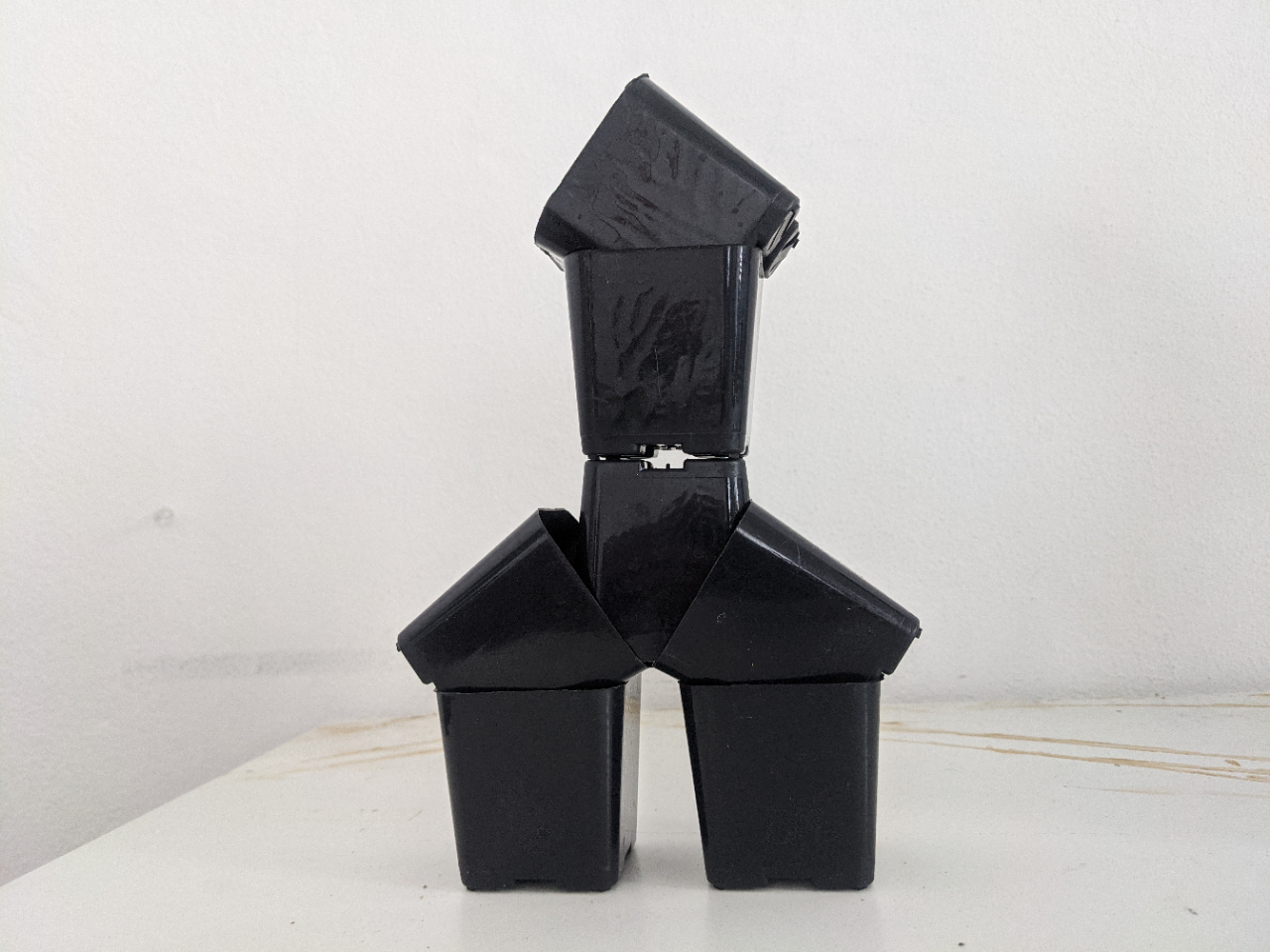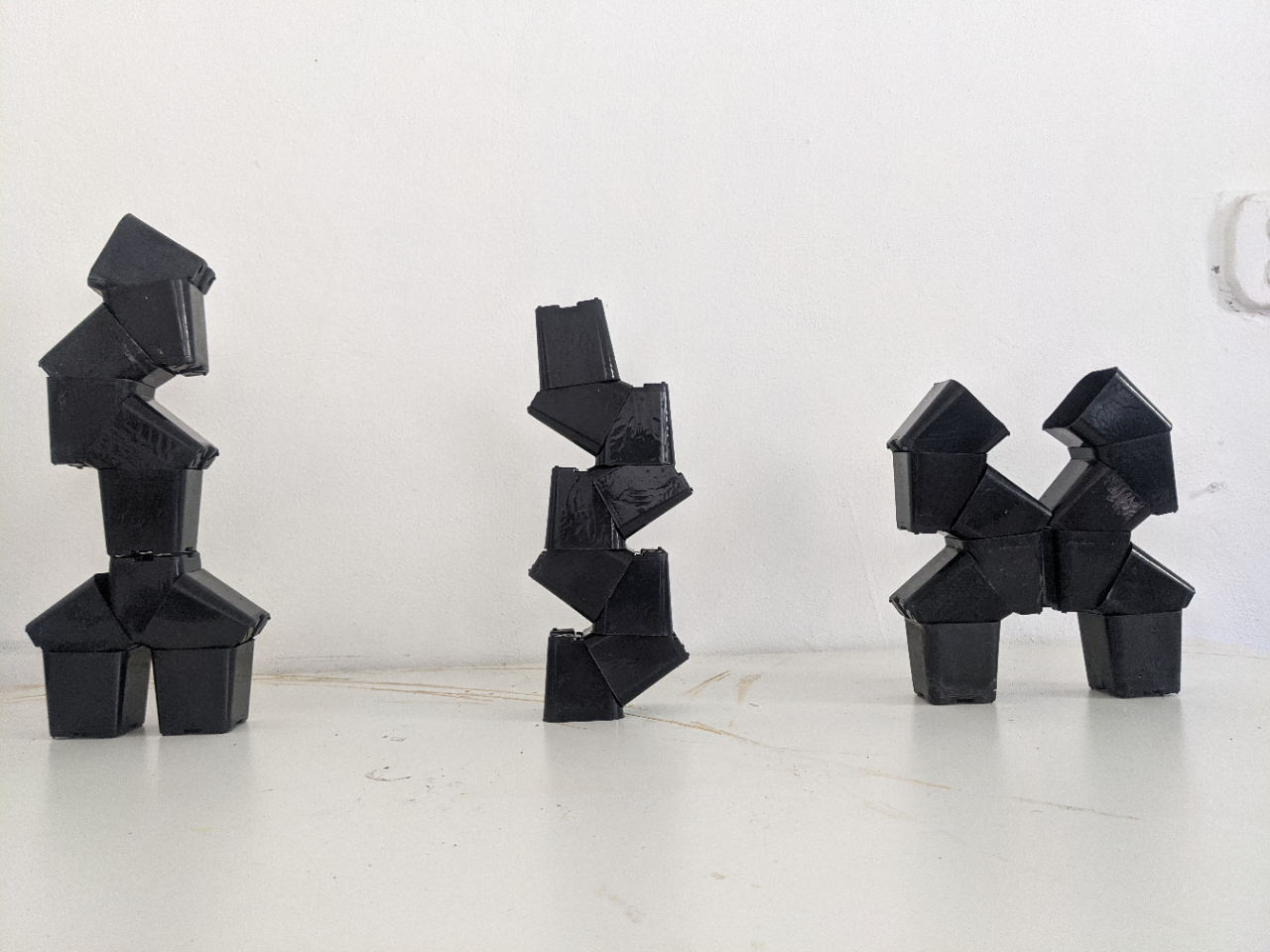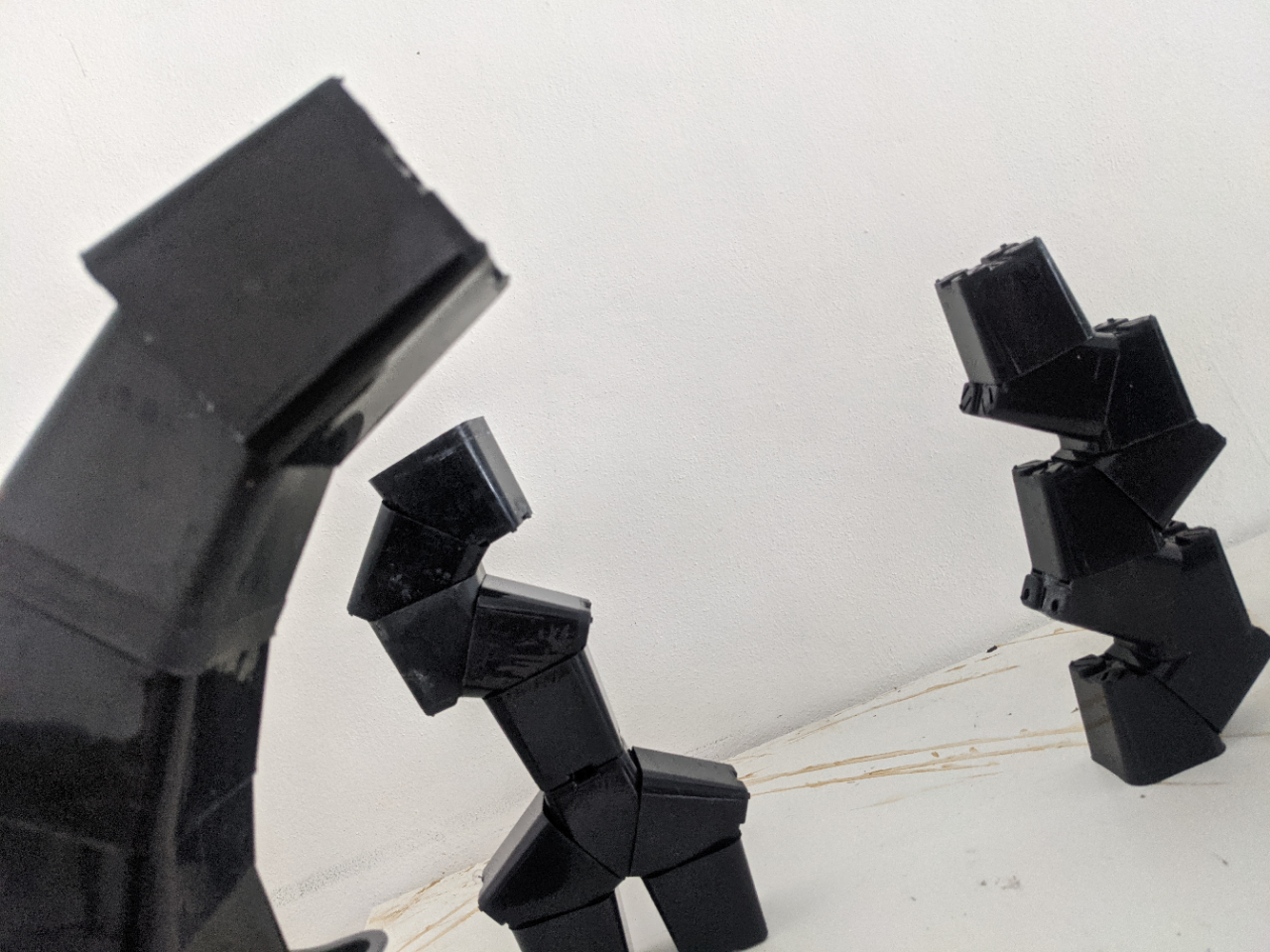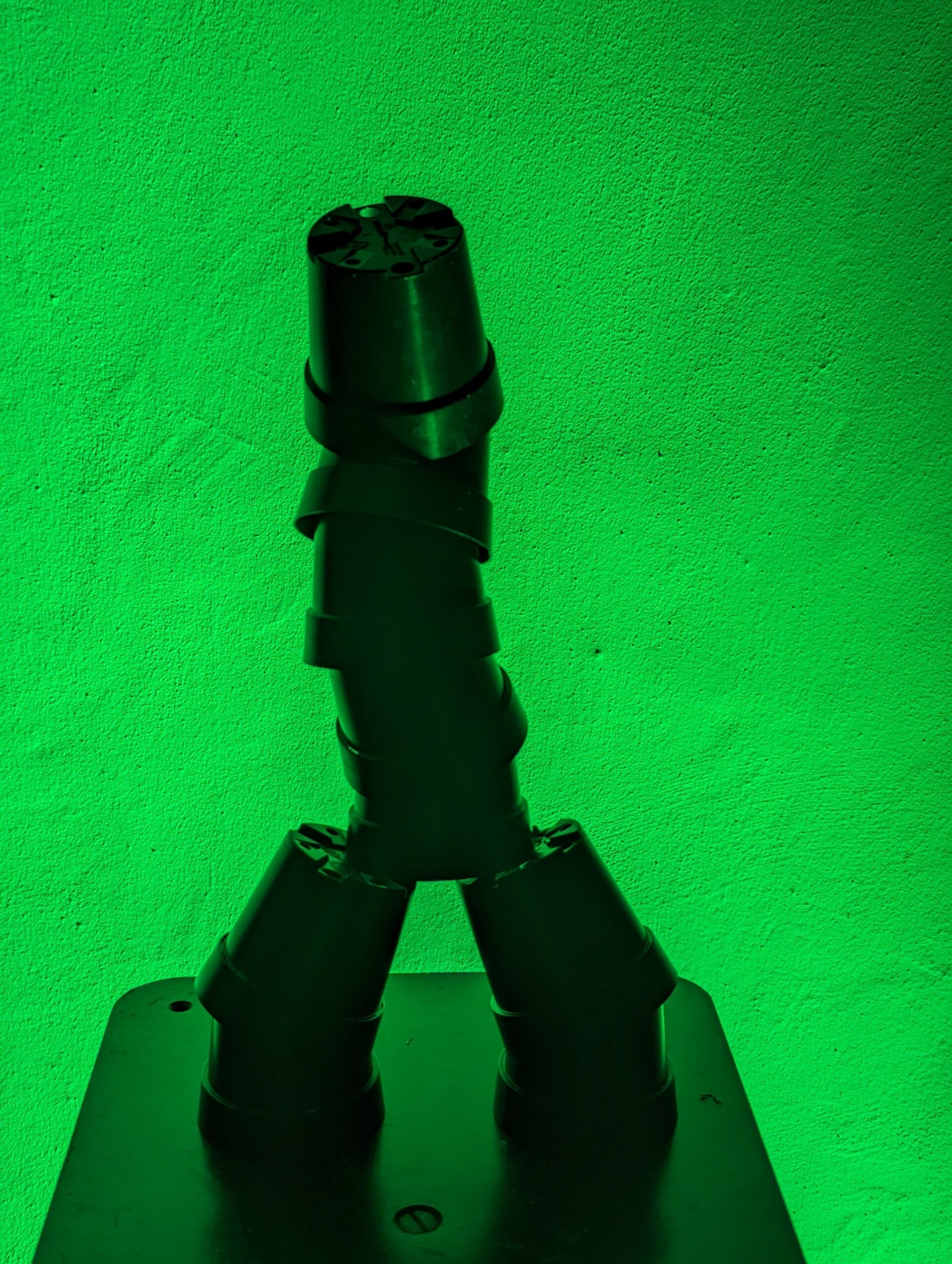The Studies of Motion
Movement manifests in time and space through durational cycles, velocity curves, distance coordinates, guiding vectors and measurable angles. People, animals and plants experience motion in unique contours and rates that can be observed directly or through the action of a stimulating agent. Such is the case of invisible air exciting the leaves in the crowns of trees. Revealing the properties of the invisible energizers has a capacity to expand our perceptual channels, and by doing so, deepen our lived experience.



In continuation of developing my artphibian practice that spans across the disciplines, my short summer residency at the Bakehouse Art Complex (Miami, FL) in the summer 2023 focused on exploration of motion present at and around the very special Studio J. The Studio J (Joe’s Corner) used to be the living quarters of Joseph “Joe” Gideon, who was the former building mason and campus guardian at the Bakehouse for many years and who, sadly passed over in 2022 at the age of 93. I met Joe a few times when organizing FETA events at the Bakehouse in the past and had sweet interactions, even visiting him in then-his abode.
There is a small patio, a quasi-garden at the stairs to the studio filled with pots of exotic plants, most of which were brought in by the Bakehouse artists. My contribution was an orchid. The studio itself is a modest room with a window and white walls. I spent days meditating and listening inside the studio and on the outside patio, imagining how Joe spent his time there and what the role of my visit was. It was important to me to receive a permission from him to occupy the space.
In the moments of mediation and listening, I noticed that there were three prominent sources of sound: air moving the ceiling fan and a small wall AC unit inside the studio and a robust AC unit outdoors (powering cooling systems for the nearby studios and library). The ecosystem of the air fluidly permeating between the outdoors and indoors became visceral. I imagined manifestations of the invisible air motions in discernible visual, audio and tactile ways. I began understanding the passing of time– the in between motion as a window of access which I was granted to explore. The Studies of Motion began.


THE PATIO
I began studying the plants in the patio, learning their names and qualities, discovering cassava, a pink trumpet tree, snake plants, swiss cheese monstera and aloe vera. With the many inhabitants, the patio-garden was indeed a community space. In addition to the plants, a pair of small brown Common Ground Doves that nested in one of the bushes appeared frequently in sweetly curious visits.
As a result, it made sense to install a table with four chairs and an overhang tent for sun and rain protection. (The tent got eventually ruined by some torrential rains and was removed.) Reminded of public places in Little Havana where people play domino, I placed a chess mat with 3-inch retired plastic orchid pots on the table, imagining a community gathering spot.
The Beautiful Monsters Series
The patio-garden requested that I expand my O-Thing series in which orchids are mounted on various retired media such as speakers, CDs and cassettes. I brought some orchids mounted on solar-powered speakers to co-inhabit the space and began a new series: The Beautiful Monsters.
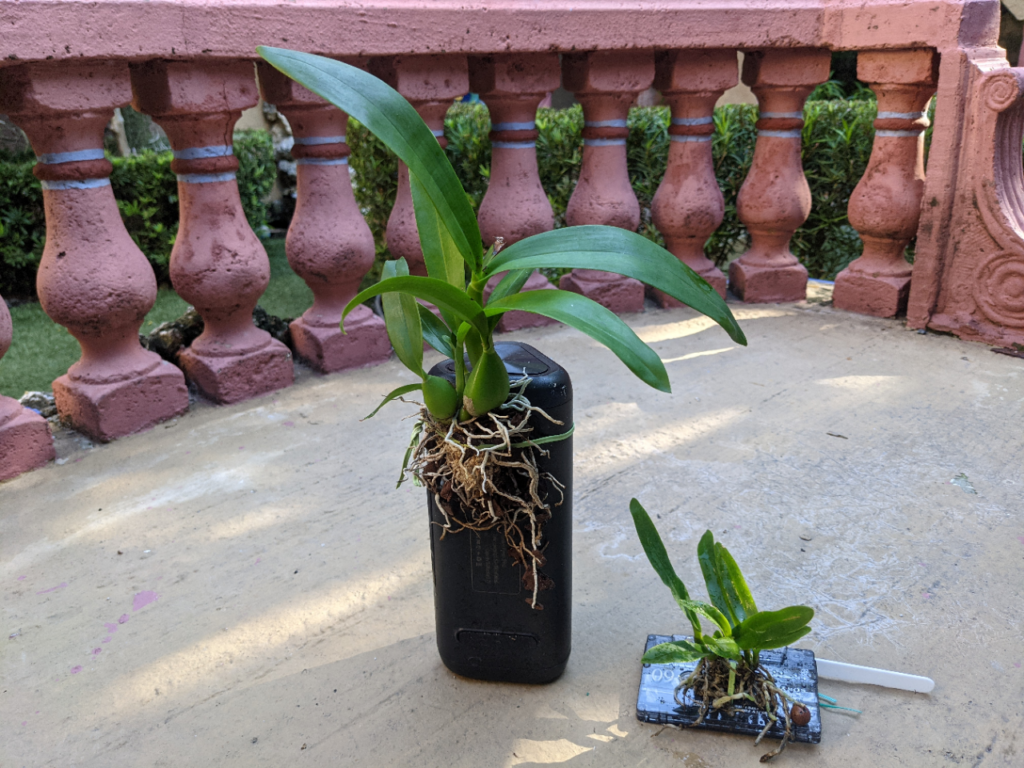
In the Beautiful Monsters series, I place delightful yet invasive plants into retired wine bottles. Filling and emptying bottles contains time and motion markers. Loading the bottles with plants was to capture a passage of time as they began rooting, promoting one way how we can observe motion in directional expansion.
I decided to bring the cuttings of my very special Krishna Butter Cup tree (a ferociously expanding ficus that can take over spaces) to the Bakehouse patio and soaked them in wine bottles filled with a root hormone solution. I imagined that this bio-installation would eventually develop into sounding living sculptures.
Krishna Butter Cup (Ficus krishnae) tree from India has a fascinated story. Apparently, young Lord Krishna was very fond of butter and would even steal it from the kitchen. Once his mother Yashoda caught him. He hid the butter in a leaf of this ficus tree. Since then, the leaves remained beautifully twisted.
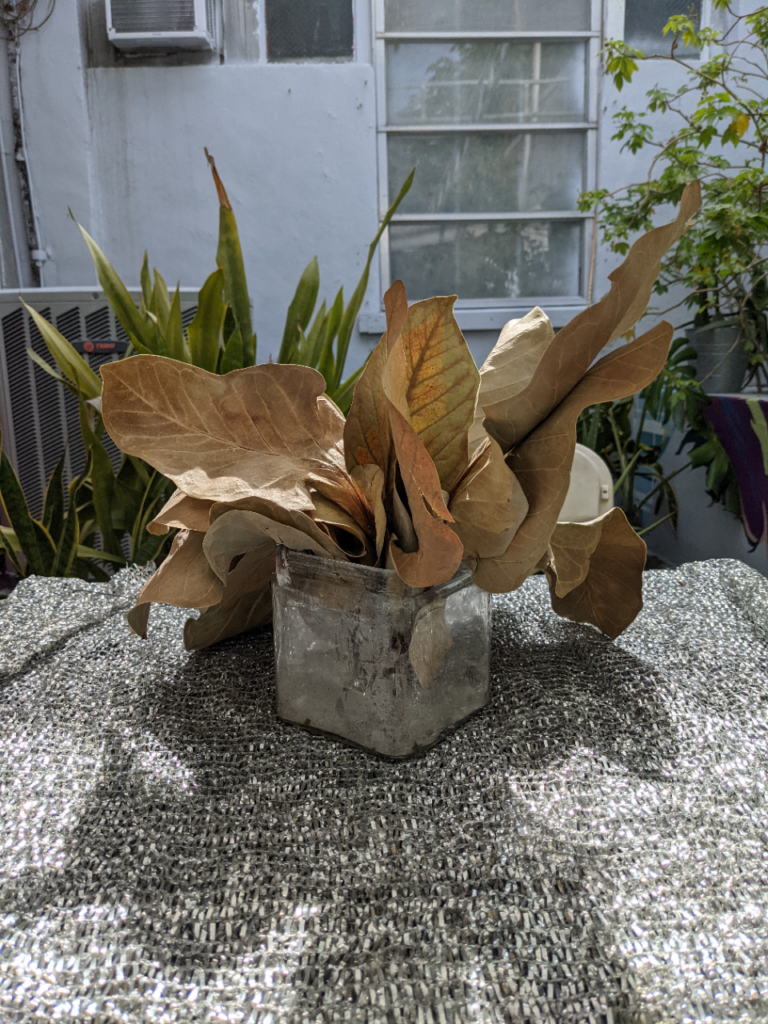
To my delight, some cuttings sprouted into leaves and over 3 months began rooting. As of October 2023, they are still expanding their root systems in an intricate slow-mo choreography. In time, they will become Beautiful Monsters musical instruments.



Outdoor AC unit: The Meadow Dancers
Materials: 15 clear plastic pots mounted on a white metal grid with clear zip ties and green orchid wire. Movement powered by a large outdoor AC unit.
This outdoor AC unit was the strongest of the invisible air stimulants and while it was running most of the time (yes summer temperatures in Miami were higher than usual), it took some breaks. I had no control over the unit: its work was tied to the indoor temperature of the building. Could the air flow become an exciter for a physical structure to manifest visible motion?
First, I mounted a few plastic bags on a metal grid platform and placed it on top of the unit. The bags came alive dancing in the air flow with fascinating compulsion. When the unit took a pause, the bags deflated like balloons. I cut up some of them to allow for air to blast through in order to create more diverse choreographies. It was fun: these dancers had a lot of flair, yet they seemed somewhat unruly and unrelated to the garden.
Thus, I sought something else: I imagined plastic pots dancing in the air on a stick, like moving grass or pole dancers. I experimented with different sizes and colors and settled on a set of 3-inch transparent pots with a central hole, dancing on translucent zip ties attached to a freshly sprayed white grid. Their motion was striking. The pots moved up and down in the air along the zip ties that, due their flexibility moved sideways, creating a mesmerizing 3-dimensional choreography. The loops at the top of the zip ties fixed with the green orchid wires prevented the pots from flying away. The motion of this newly formed meadow depended on the amount of air received at different points on the grid. Some pots were trying to fly to the sky, some lingered closer to the base. An intriguing motion ecosystem emerged.
THE STUDIO
The Ceiling Fan: The Sonic Helix Ballerina. Life is a thought.
Materials: A string of mostly white orchid tags threaded together with a green orchid wire, 2 piezo microphones, computer running MAX/MSP and Ableton Live programs.
At the center of the studio’s room, there on the ceiling, hung a large white fan. Controlled with a 3-speed remote, the fan created ambient air movement in the room. In low speed, the fan whispered continuously. In the middle speed, slow beats emerged, and in its highest rotations, a quasi EDM sonic club scene developed.
It’s revolving motion spiked my curiosity. I imagined unveiling the air movement through a nursery mobile– strings of orchid tags suspended from it forming circular pathways.
As a side note, the orchid tags from the plants that died on me have created vivid memory thoughts of the past lives, markers of time and space. Life is a thought.
To continue, I constructed a couple of tag strings with the green orchid wire and taped them to the foot of the fan. I discovered that they were unable to remain untangled under any speed conditions and thus, settled on a single string reaching to the floor. In slow speed, the tags were touching the ground covered with industrial paper left in the studio by the previous artist, making fascinating rattling sounds in contact. The connection between the air and ground was compelling. In the middle speed, a helix-like continuous motion pattern of the string appeared as the tags lifted from the ground. Under the high speed, the tags were swirling in the air like a ballerina. Four dimensional (height, width, length, speed) and 2-planar (vertical and horizontal) rotational motion system took form.


To regain the connection with the ground, I attached a few extra tags at the end, finishing with one made of hard plastic. Now the string gained a capability to excite the floor paper like a plectrum, becoming a graceful excitation mechanism. On the floor, in the center, right underneath the fan, I placed a pile of remaining orchid tags. The string movement began sifting through the pile, finding new paths through the stack grounded in gravitational resistance, sorting through it and shaping it. The memories of the orchids’ lives that carried these tags were imprinted in a new organized manifestation. Life is a thought.
Every time I would enter the studio, I would turn the fan on and let the string helix continue in its expressions. Eventually, the string began moving the individual tags on the ground to the periphery of its path, shaping the center into a heart, eventually sweeping the tags with its centrifugal force away. Absolutely fascinating and beautiful. Its predictive determination to imprint its circular movement into the ground space sparked my interest.
I kept thinking about the idea of the helix plucking strings–virtual strings for that matter. Thus, I taped 2 piezo microphones onto the floor’s paper in the path of the helix and connected the mikes to the computer where their contact with the floor stimulated excitation of virtual string models via MAX/MSP and Ableton Live programs. The strings were tuned in harmonic series and scanned through a three-minute pre-automated melodic sequence. Portions of the melody were revealed when the helix plectrum encountered the microphones. The plucked strings were then distributed via a small 4-channel audio system with speakers placed behind the monitors on the vertical grid wall (see the next section).
The interaction between the string helix and the pile of tags in its pathway gave rise to an intriguing motion-sonic system. Through the tension between the utmost order of the rotating helix and the utmost chaos of the pile, the tags became alive once again. Their past functionality as a static name holder placed in an orchid pot was transformed into a dynamic motion and sound rendering system.
Life is a thought.
The Self-reflective Ecosystem.
Materials: White metal grid wall, 5 Dell retired monitors, USB camera, computer running MAX/MSP/JITTER and Ableton Live; extra 2 monitors placed flat on elevated monitor stands and one on a structure created from retired plastic orchid pots.
VIDEO
My vision to create a more complete system of motion relationships in the studio led me to install a vertical metal grid wall holding 5 obsolete monitors that were arranged in a shape of a flower. The power and VGA cables extended from the monitors to the ground as flower peduncles. Extra 2 monitors were placed flat on monitor stands waist high and one on a knee-height structure constructed from the retired plastic orchid pots.
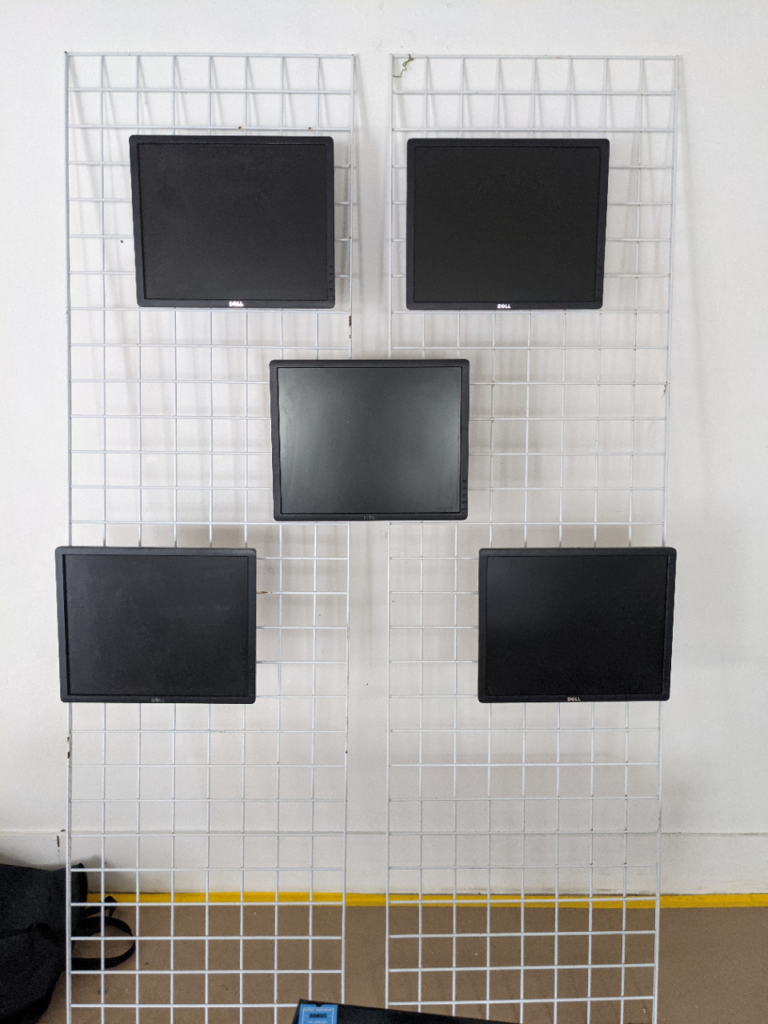
All monitors were connected to a central hub placed underneath, receiving a single video stream from a laptop. I sought to diversify the displays from the single stream and tuned the RGB colors of individual monitors to bias a particular hue, giving an impression of individuality.
I then used a USB camera to gather live-video stream that would be projected though the monitors in real time. I experimented with placing the camera outdoors, facing the tree in the parking lot. I also suspended it over one of the flat monitors to receive a close up on a small number of plastic pots placed on the top of the monitors.
Finally, I settled on placing the camera across the room facing the monitors, looking through the rotating tag helix. As a result, a video loop in which the camera was looking at itself (as mirrored on the screens) was materialized.
INTERACTIVE LOOP
Using MAX/MSP/JITTER environment, I created a program that would colorize and emboss the live camera view. Further, the program would hold and delay the video feed, keeping the memories of the scene for some time. The level of video processing was controlled by the triggers received from the floor piezo microphones (via amplitude tracking), altering the effect when the helix struck the mikes.
An interactive multi-channel motion-audio-visual installation came alive. When somebody stepped into the scene, they would become a part of this self-reflecting ecosystem, seeing their filtered image on the screens. The participant’s projected identity would be modified every time the helix plectrum came in contact with the piezo microphones on the floor. The monitor’s modest resolution sealed the retro aesthetic of the projection. Nam June Paik would be tickled.
The Wall AC Unit: Hear Your Touch.
Materials: Plastic orchid tags, piezo microphones and small amplifiers.
A wall AC unit was the primary manually controlled cooling mechanism in the room. With three speeds, I was able to experiment with various degrees of air flow. I placed light objects such as orchid tags and small pots in front of it to make the airflow become visible. I explored its sonic properties too, attaching four piezo microphones to the front grid and on a side of the unit to augment any interactions via a set of small amplifiers placed in the shelves next to the unit.
In the end, I decided that this particular air flow would reveal itself most compellingly through tactile interactions. My desire to touch the air was transferred to touching the agent of the air production: the unit itself. An orchid tag became a prosthetic arm, a plectrum and an exciter for the frontal grid. Scrapping and plucking unveiled the gridiness of the surface via sound, giving prominence to the immediate audio-tactile loop. Sounds of plectrum’s pressure, speed and direction penetrated and disrupted the continuity of the invisible air flow.
To integrate the AC unit activities within the room’s system, one microphone was connected to the computer. Here, its signal amplitudes were tracked and used to excite virtual strings similarly to the helix plectrum on the floor. The visitor would become the control agent of the plucking mechanism.
The Instability Series.
Materials: Plastic orchid pots, photography projection.
(Expansion of my Build Your City interactive installation in which the pots are redefined as LEGO-like blocks.)
In their design, utilitarian objects such as plastic orchid pots withstand time beyond their functional life span. The 2-inch orchid pots are typically discarded within 18 months of the seedling’s life. The seedlings continue to be transplanted into larger pots, 3-, 4- and even 6-inch wide as they grow to the plant’s full maturity. One would imagine that the pots disintegrate as they loose their functional intention. Here, the design overshoots its purpose in time.
(The plastic pots are rarely recycled. Informed growers discard them frequently to prevent spreading of diseases such as incurable viruses.)
The pot’s spatial attributes, however, are designed with precision. Their rectangular or circular flat footing is calibrated to occupy smooth surfaces with stability. Their upward facing affords to be filled with plants and growing media, both of which further stabilize the pots.
Why is spatial and temporal design misaligned in the orchid pots? Exploring this miscalibration, I discovered a uniquely laminal state– fragile, instable and expressive in the free standing Instability Series.
Placing the pots on top of each, I spent hours building architectures that would mimic plant growth. Eventually, the structures would fold. I was intrigued by the containers’ degrees of potential to balance the tension between the suggestive movement in free standing and gravity. I repeated the process many times, trying to create the tallest free-standing structures possible. Finally, I did manage to calibrate various configurations that would remain free-standing, thus capturing movement in frozen curves on the verge of changing states: stability and collapse.
The black pots on the white wall background reminded me of the fluidity in Verner Panton’s objects. Their intrinsic sleekness and color elegance were reminiscent of fashion and art from 1960s.
These instable structures manifested their inert potential to be rebuilt over and over, affording ceaseless interactions. I photographed three final architectures and projected the image on the wall. In front of the projection, I arranged the structures to completely overlap with their image. If fallen, the visitor would be able to reconstruct the structures based on the wall projection. Fun!
THE VISIT
On August 9 2023, an informal studio visit for the public was organized. The visitors were able to follow the thread of installations from outdoors to indoors. Interspersed with play and exploration, the Studio J and its surrounding patio became alive. Motion counterpoint of the visitors traversing the space enhanced the sense of community and experimentation.
In conclusion, my short summer 2023 residency at the Bakehouse Art Complex focused on exploration of motion present at and around the very special Studio J. Exploring the AC units and ceiling fan as driving forces for intermedia installations, observing the slow sprouting motion of plant cuttings and freezing the motion in the Instability plant-architecture-inspired series, my aim was to highlight the various patterns, speeds and shapes of available motion through still and mobile objects, visual displays, sound and technologies. Principal materials consisted of orchid growing artifacts such as pots, tags, wires and hooks, coming to life again in fantastical new expressions. Playing, building and touching thus became the agents for The Studies of Motion.






Supported by FETA Foundation and the Bakehouse Art Complex.
- Year created: 2023
- Materials: various retired orchid artifacts, wine bottles, living plants, AC units and a ceiling fan.
- Live sound and video
History
- Summer 2023. The Bakehouse Art Complex, Miami, FL.



